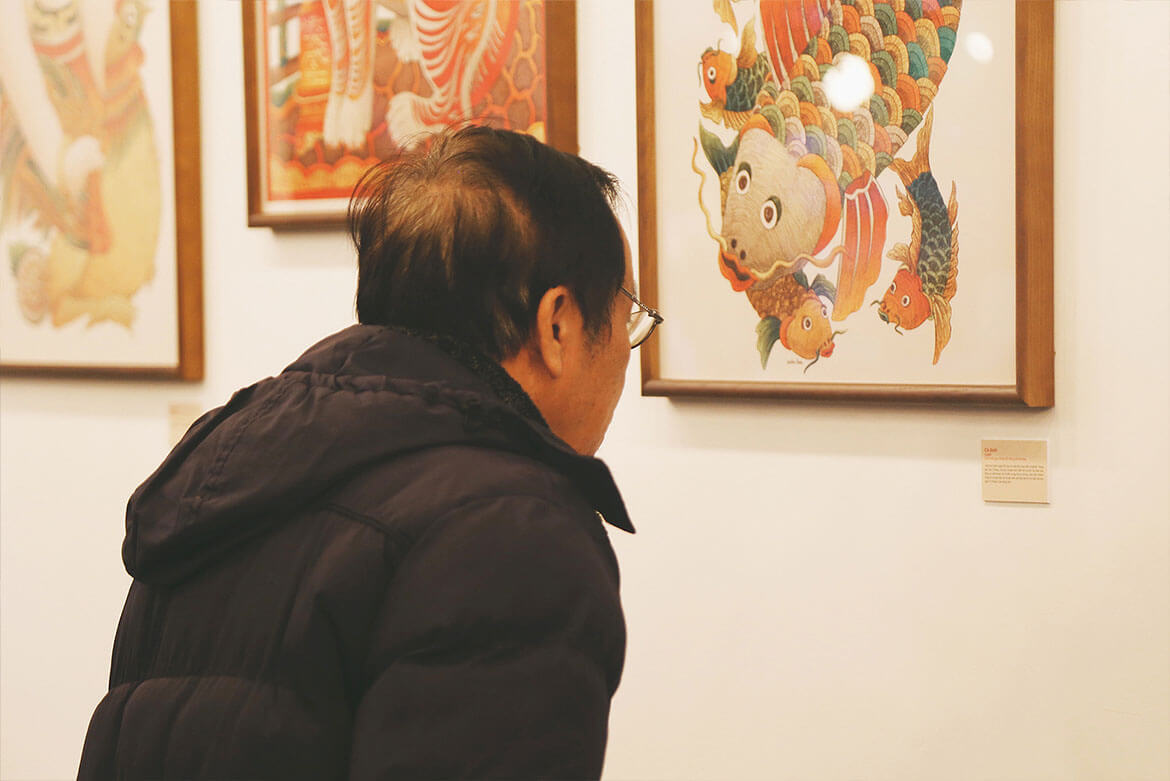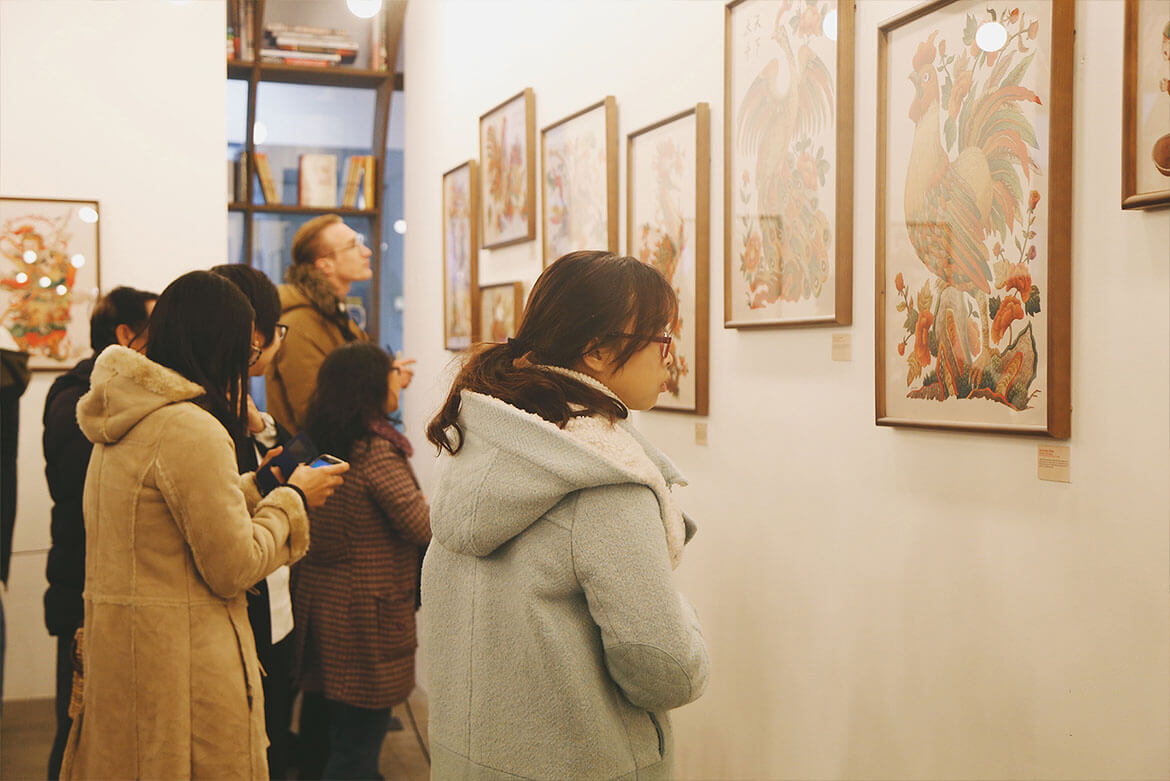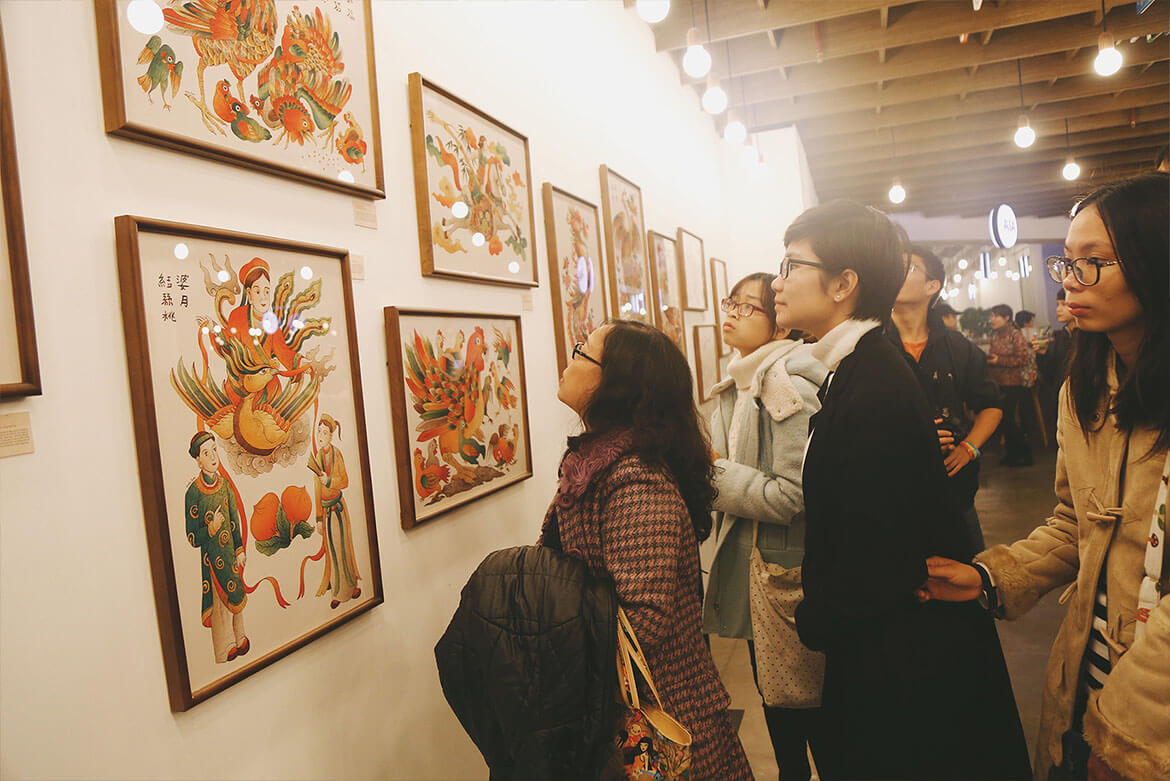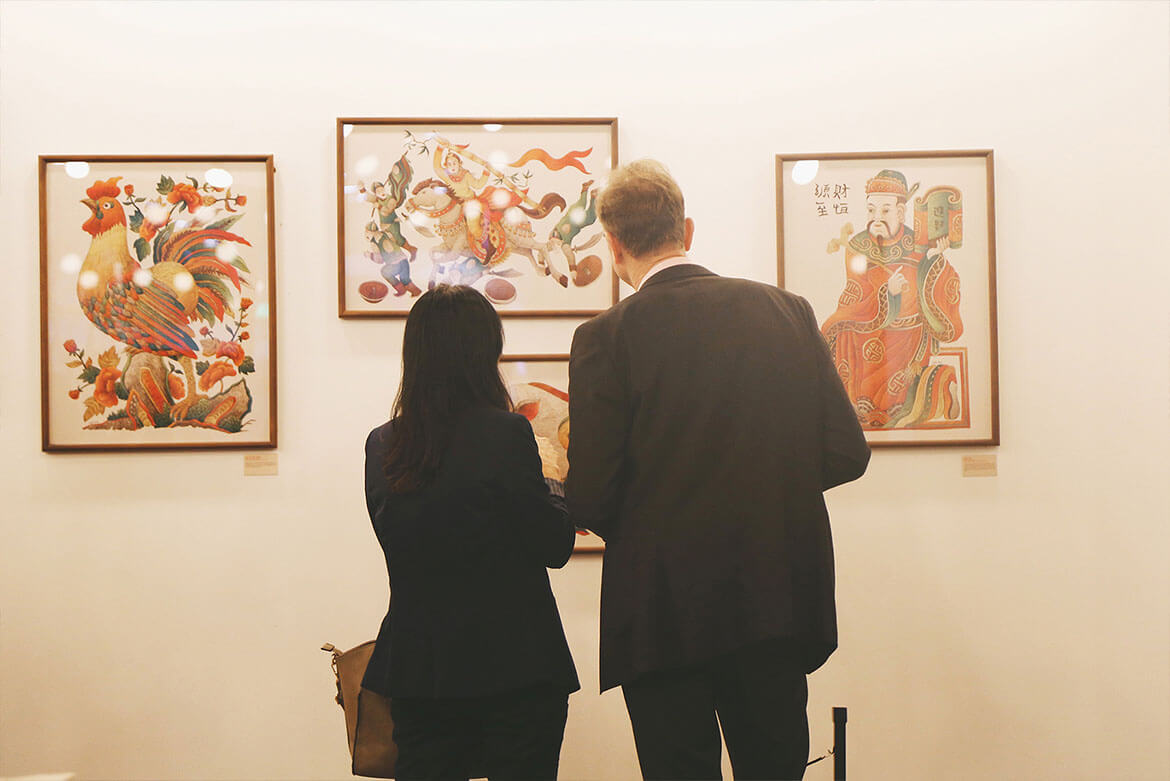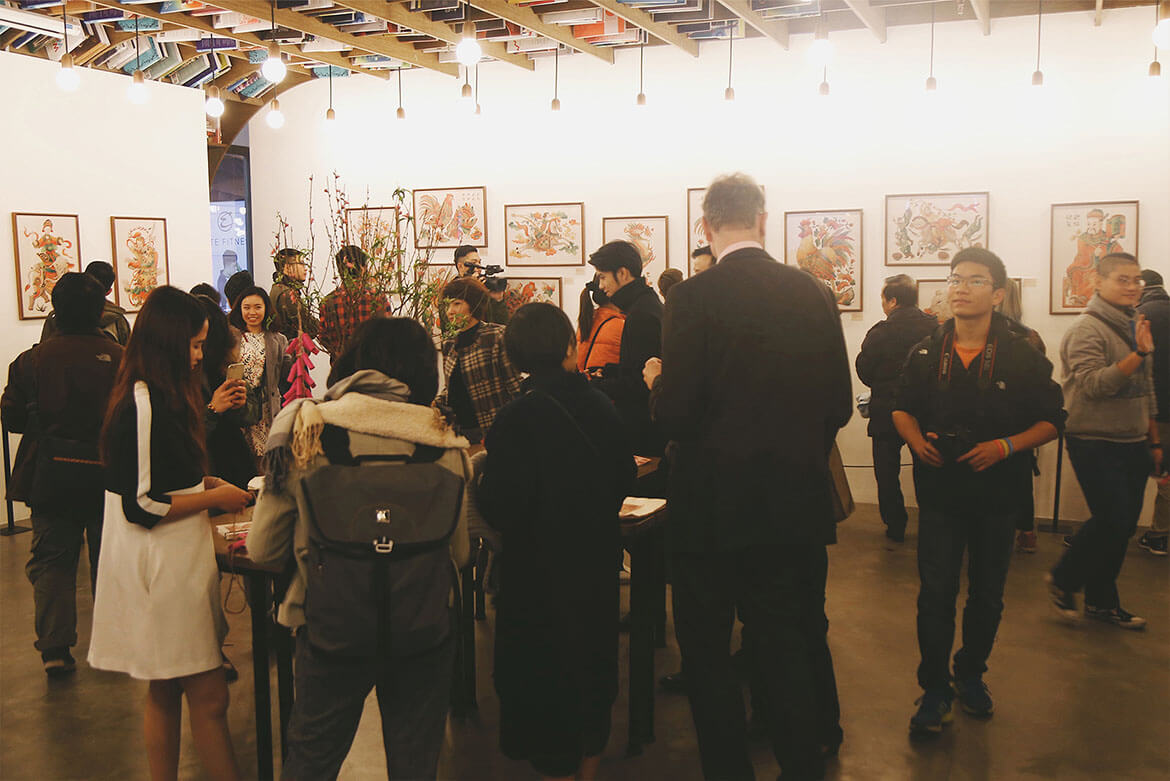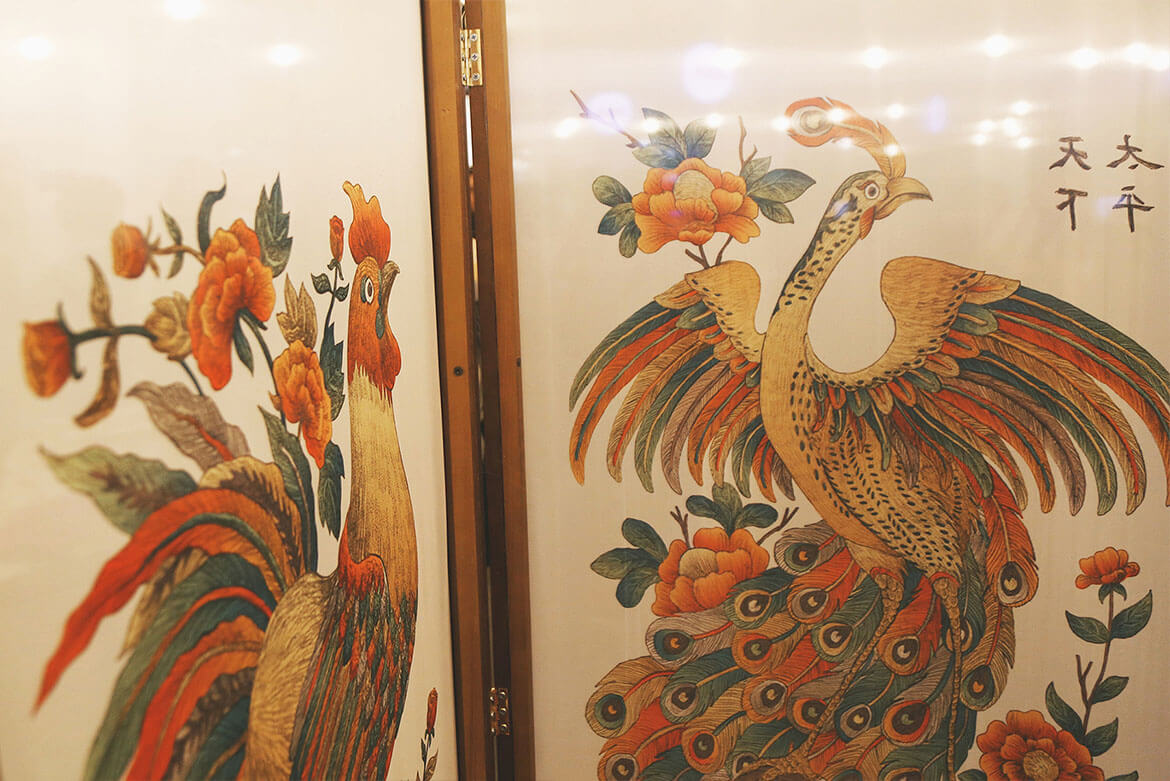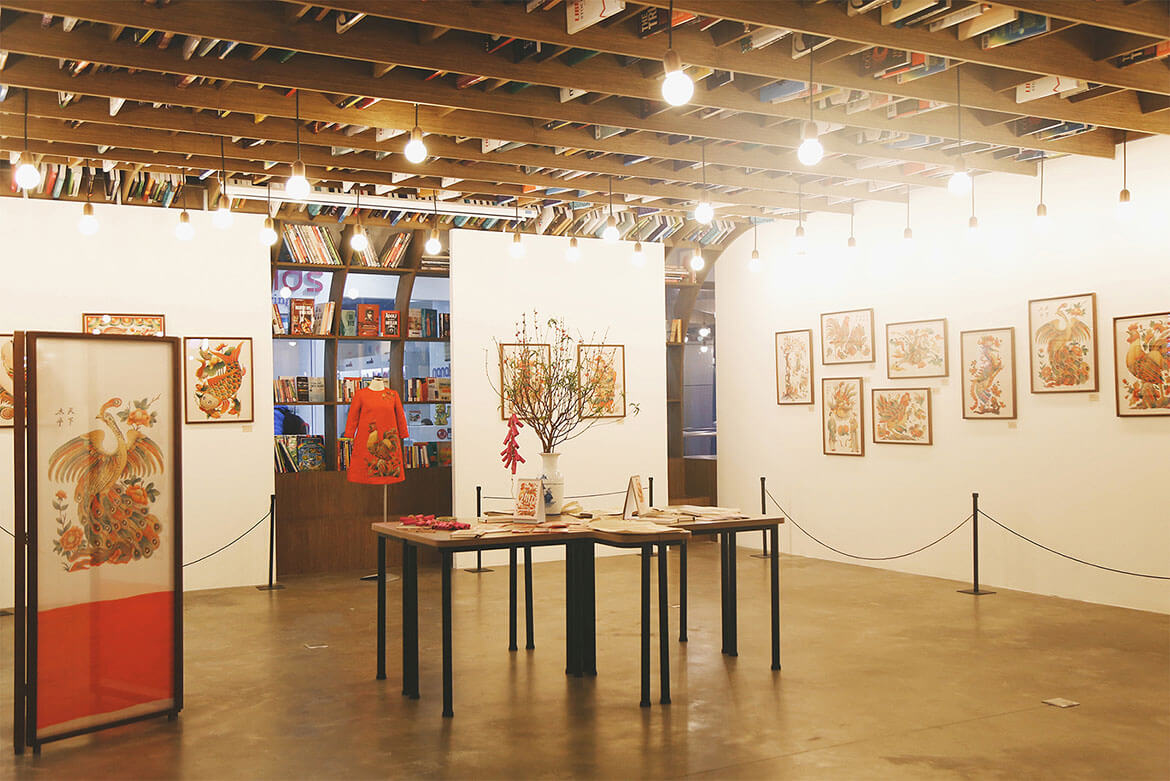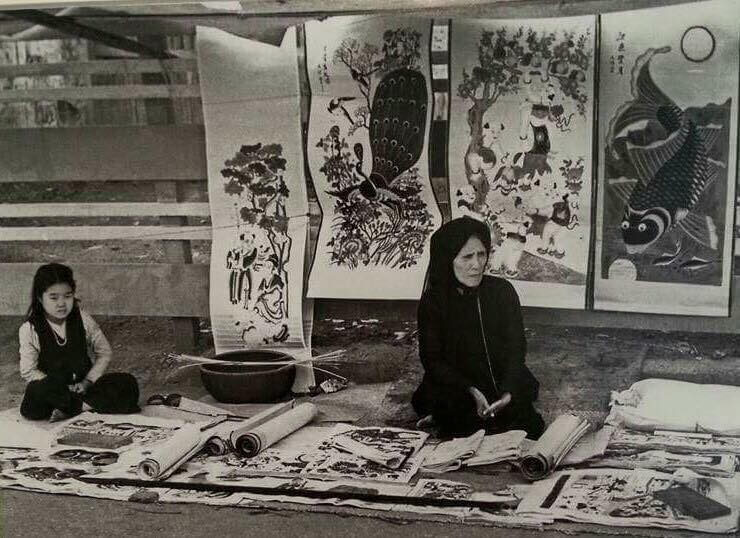

Hanoi, late 19th-early 20th century
Photo: Léon Busy (?)
Vietnamese folk painting has deep roots in the country’s cultural and spiritual traditions, with origins dating back to the 16th century during the Lê Dynasty and reaching its peak in the 19th century. Among the surviving genres, the most popular are Hàng Trống and Đông Hồ, each distinguished by its methods of creation, place of origin, and audience: Hàng Trống catered to the urban elite, while Đông Hồ was created for rural farmers. Traditionally made using woodblock prints and/or hand-painted, these paintings depicted local folklore, mythology, and aspirations, reflecting daily life, community values, and spiritual beliefs. They were commonly displayed during festivals, in homes, and at temples, where they played a vital role in bringing blessings and harmony. However, throughout the 20th century, folk painting faced a decline, influenced by the introduction of Eurocentric academic art, alongside the country’s wars and socio-political upheavals. The influx of outside influences following the country’s reopening in the 1980s further shifted the focus toward Western modernity. By the early 21st century, folk painting had come to be regarded as a kitschy relic of the past.
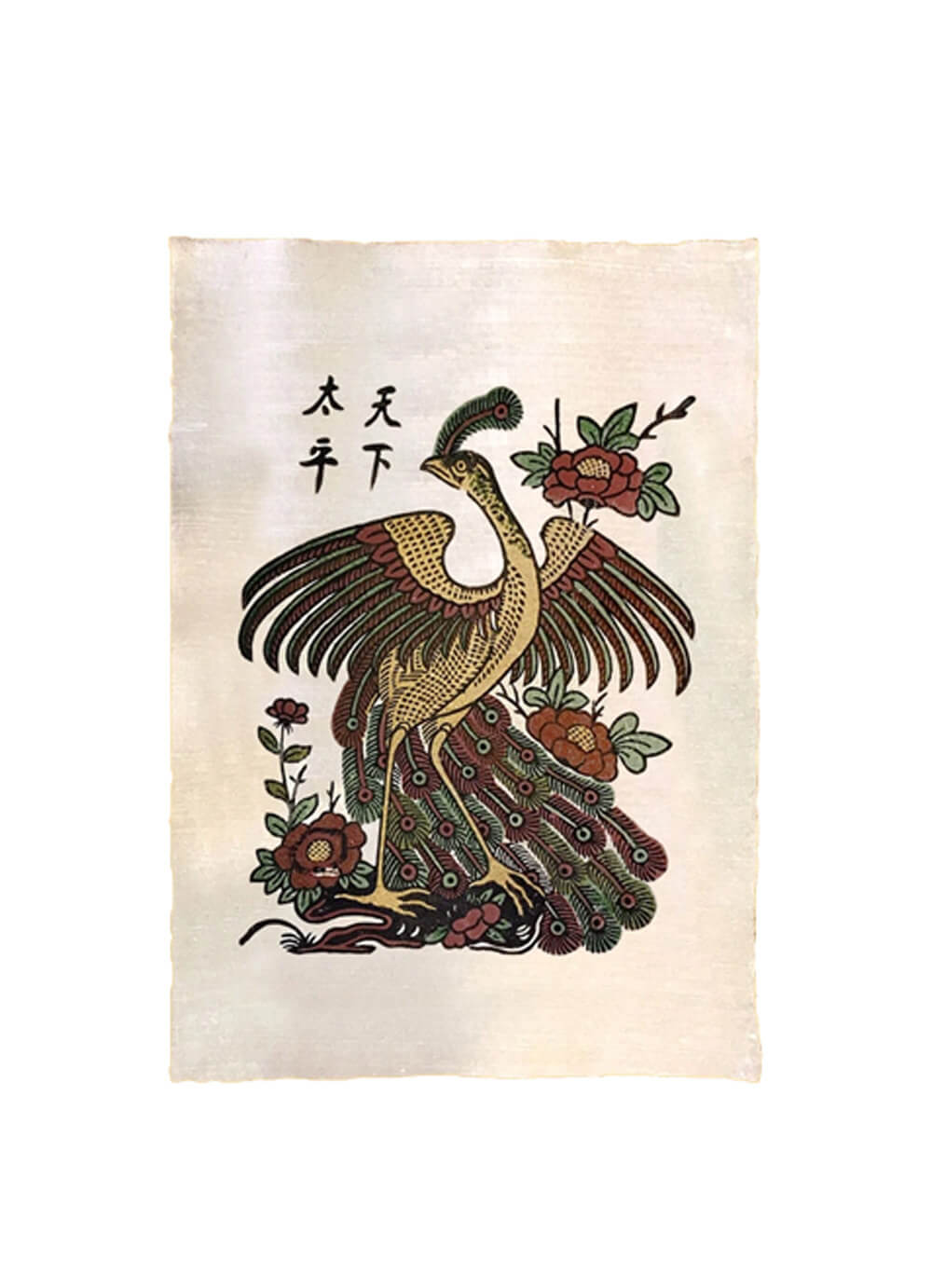
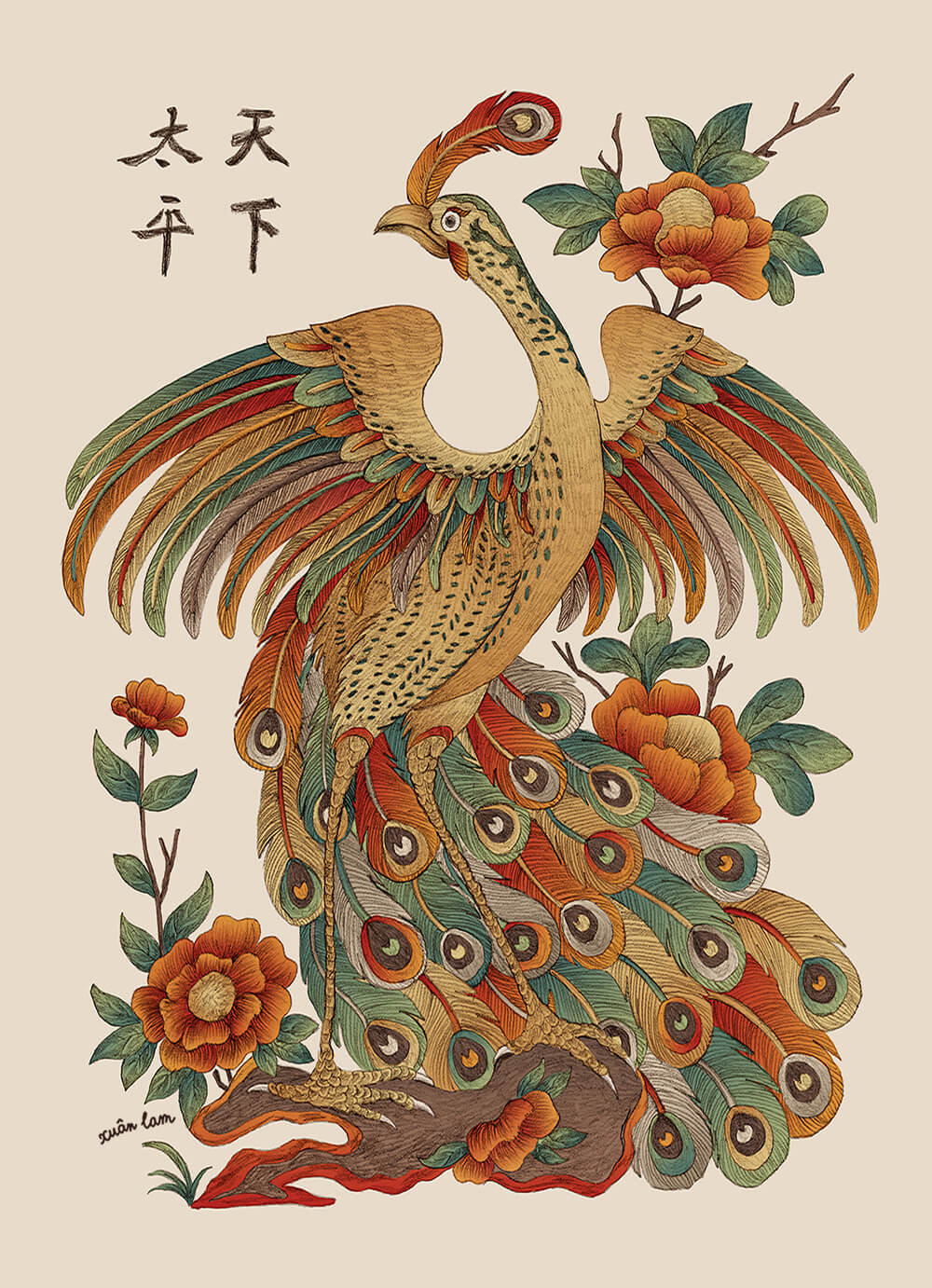
Thiên Hạ Thái Bình (Peaceful World)
Đông Hồ Folk Painting
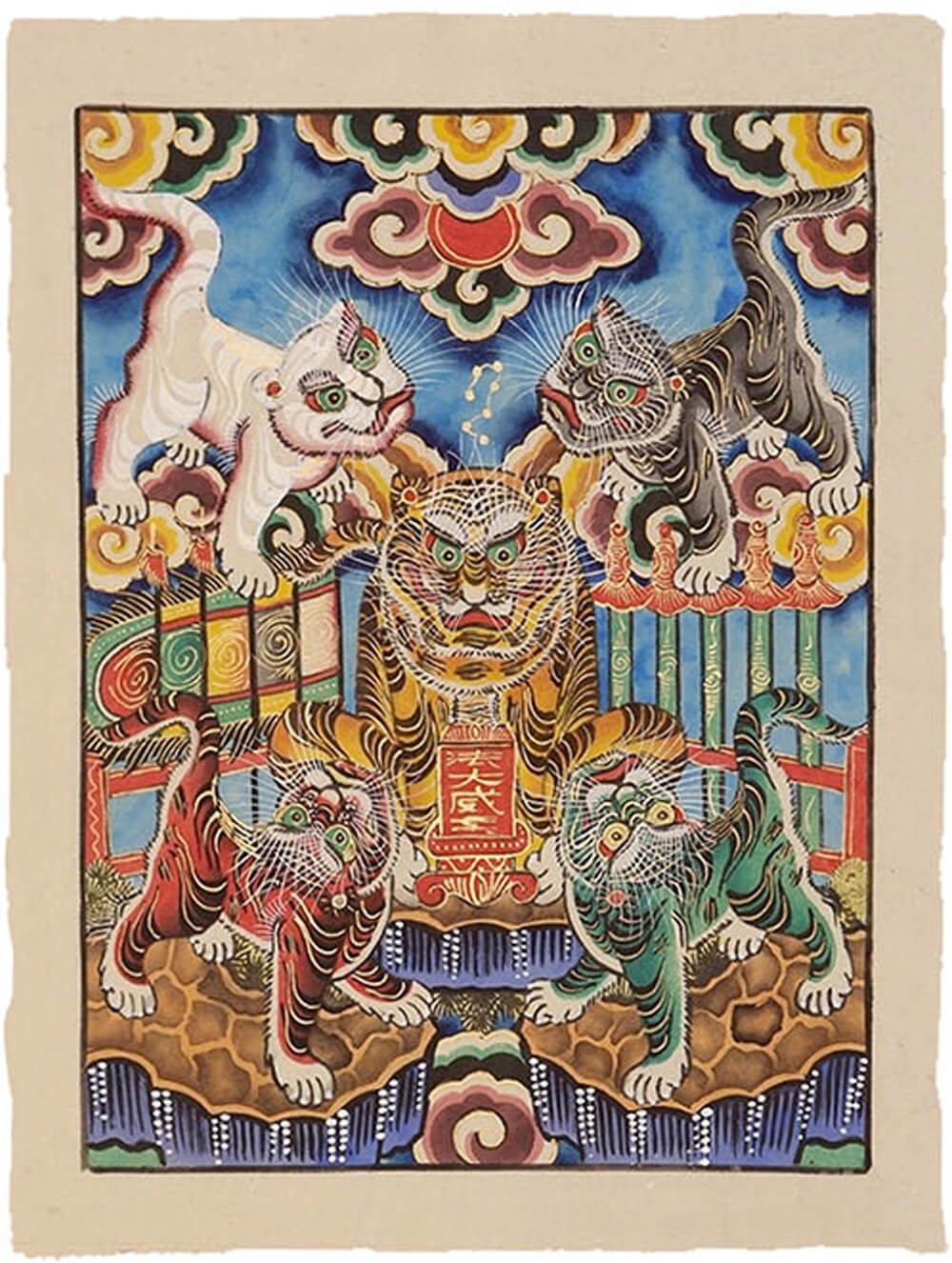
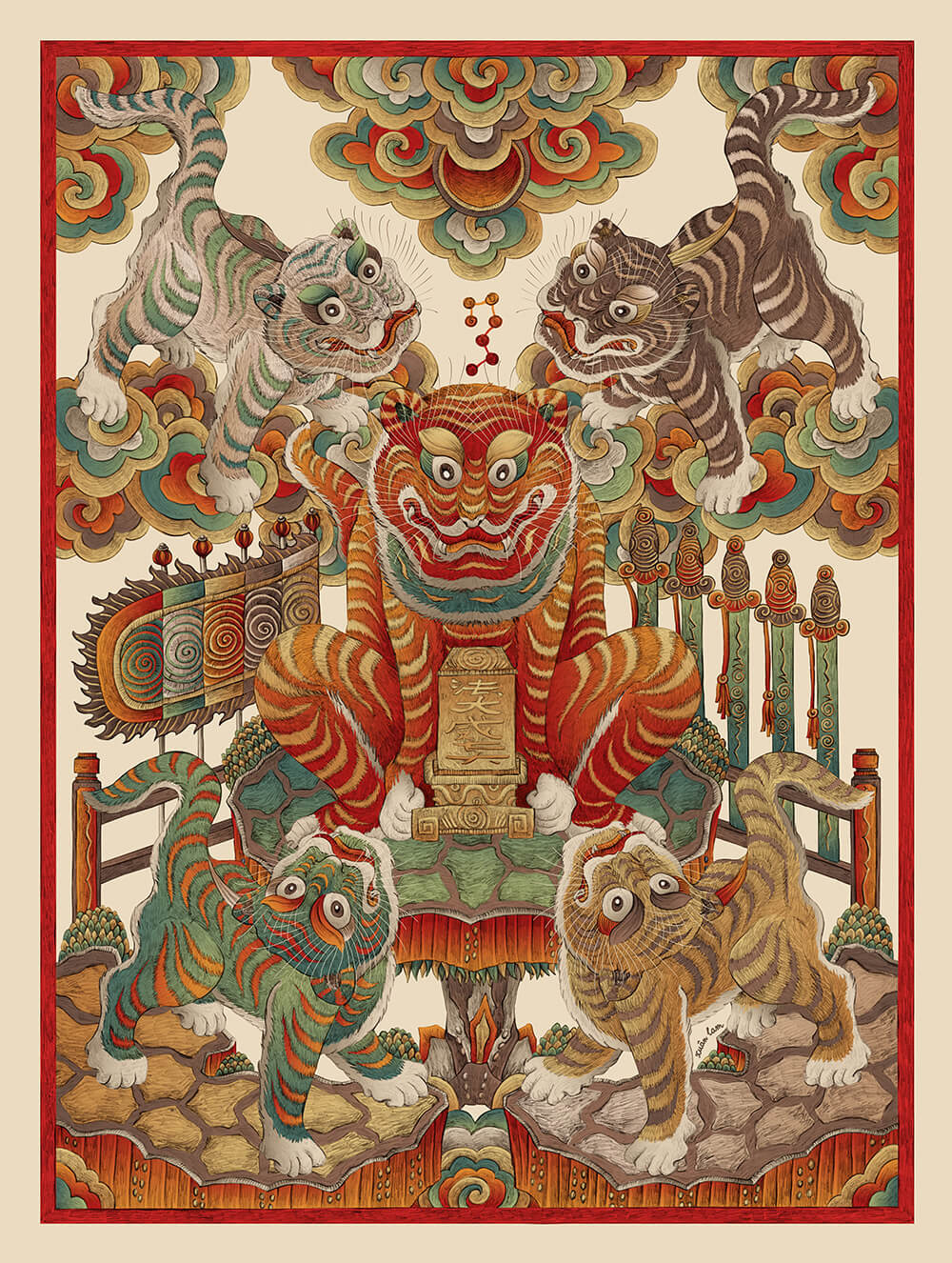
Ngũ Hổ (Five Tigers)
Hàng Trống Folk Painting
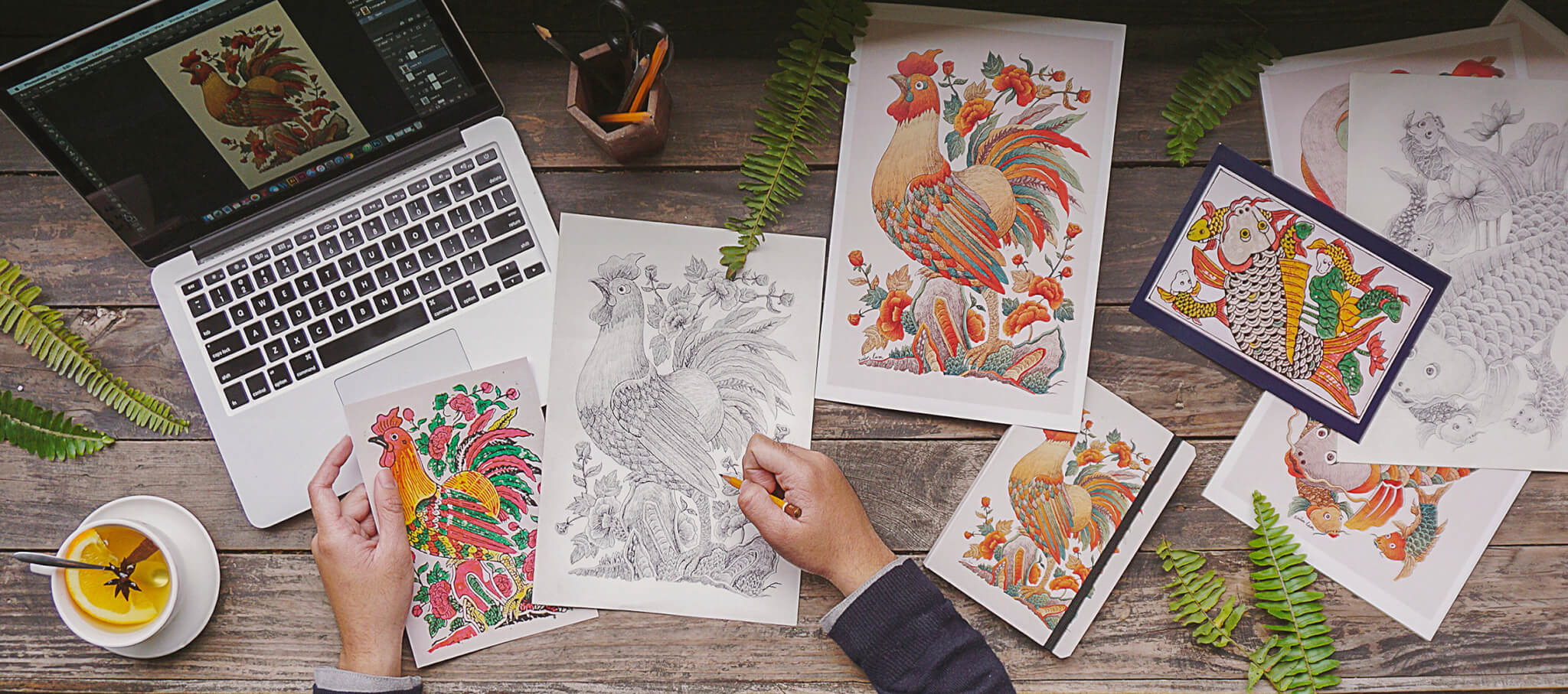
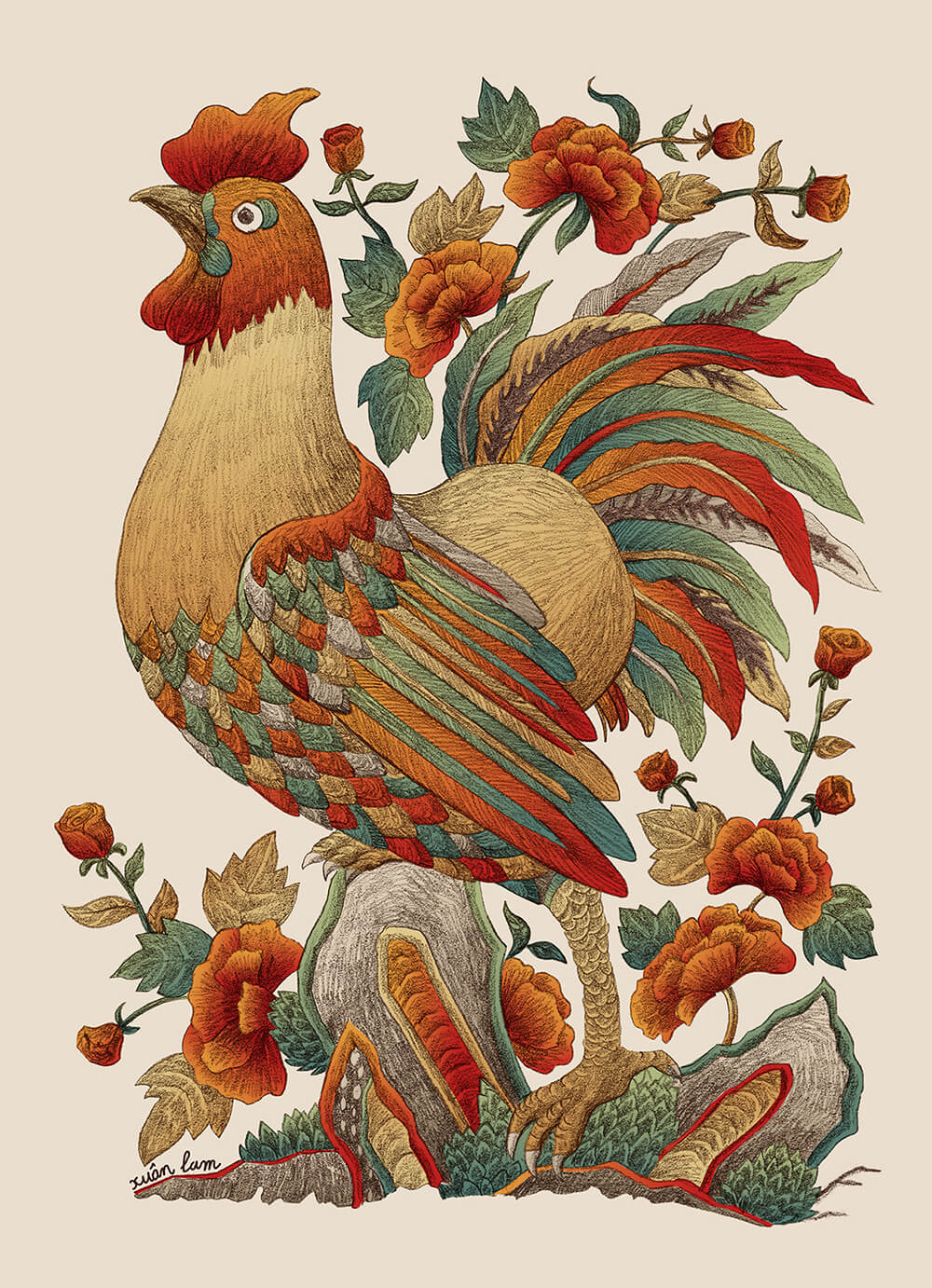
Gà và Hoa Hồng
Rooster and Roses
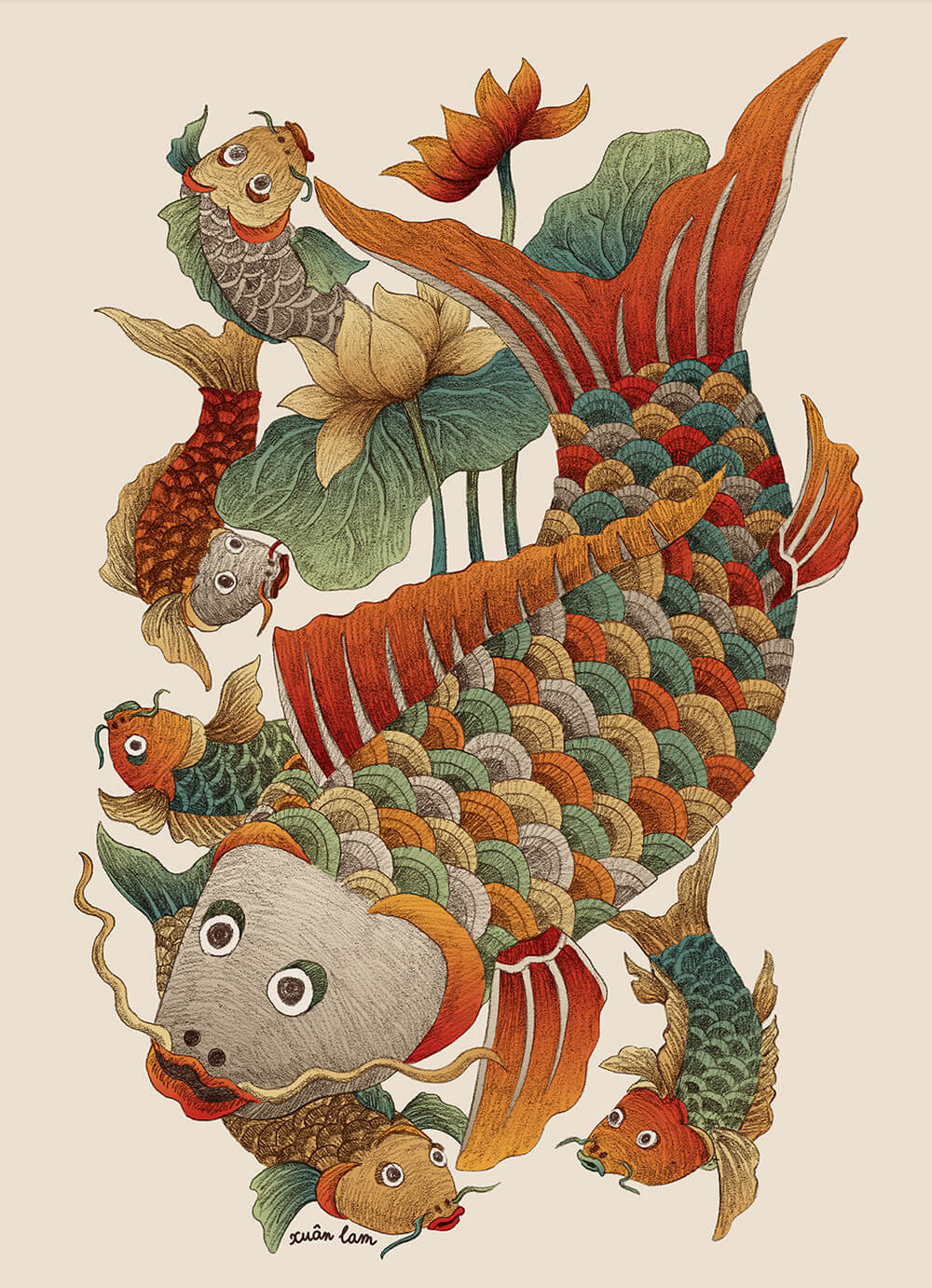
Cá Đàn
Carps
Once a beloved Đông Hồ painting, Cá Đàn was traditionally displayed during the Tết holiday as a symbol of good fortune and prosperity. In East Asian mythology, the carp represents perseverance and transformation, celebrated for its legendary leap over the Dragon Gate to become a dragon—a metaphor for ambition, resilience, and success. The carp also played a significant role in the annual ritual on the 23rd day of the Lunar Calendar, serving as the vessel for the Kitchen God (Táo Quân) to ascend to Heaven and report each household's deeds.

Ngũ Hổ
Five Tigers
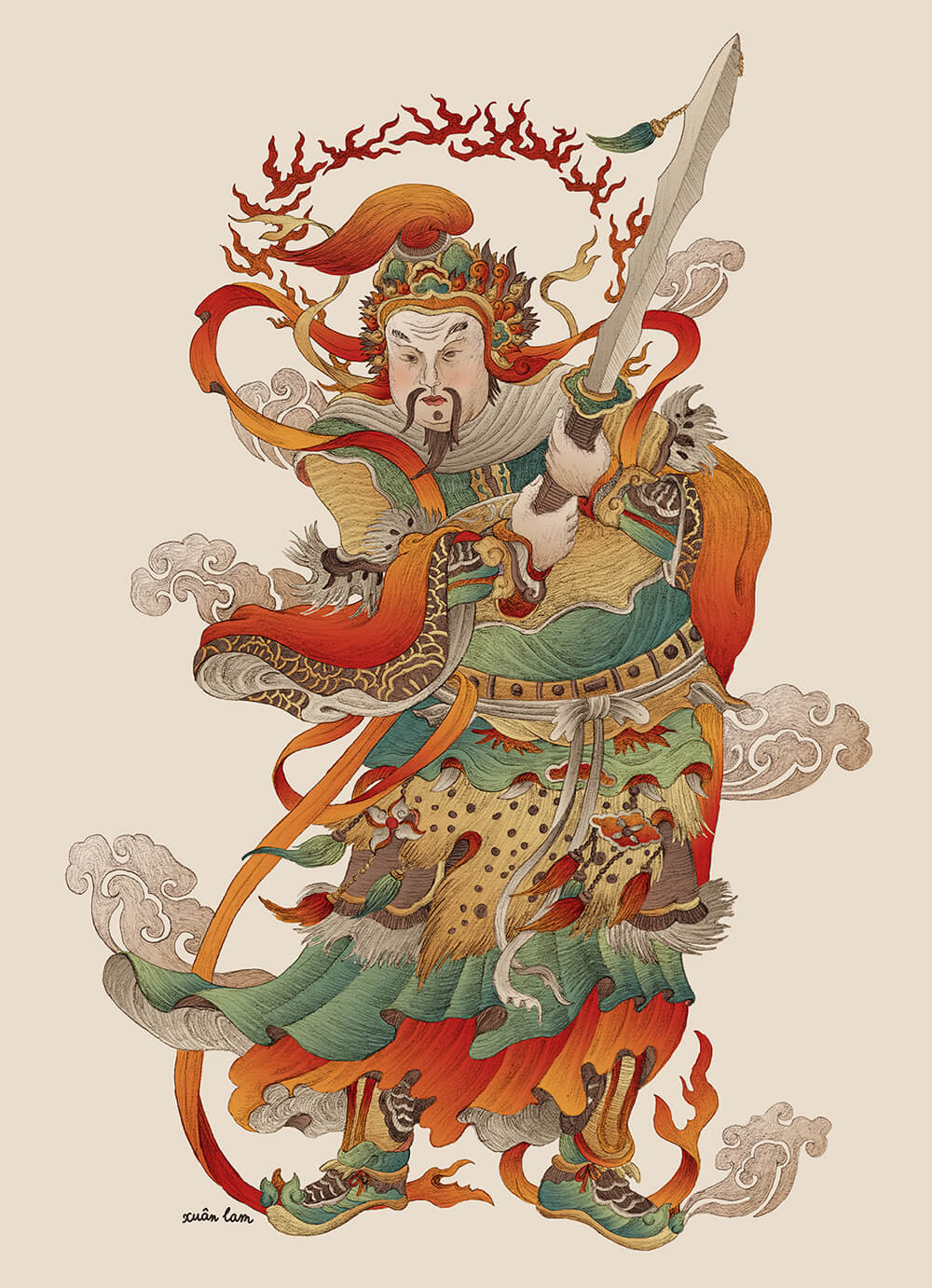
Quan Võ
Military Mandarin
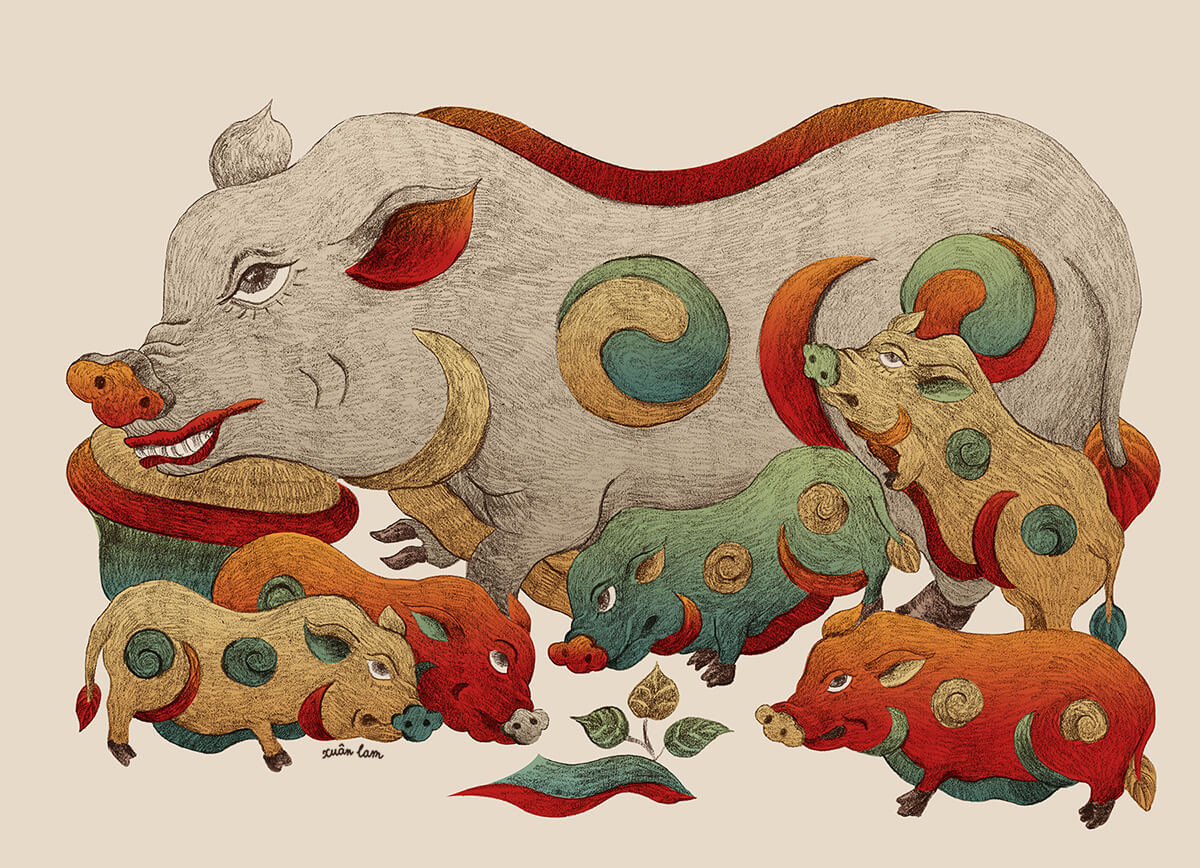
Đàn Lợn
The Drift of Pigs
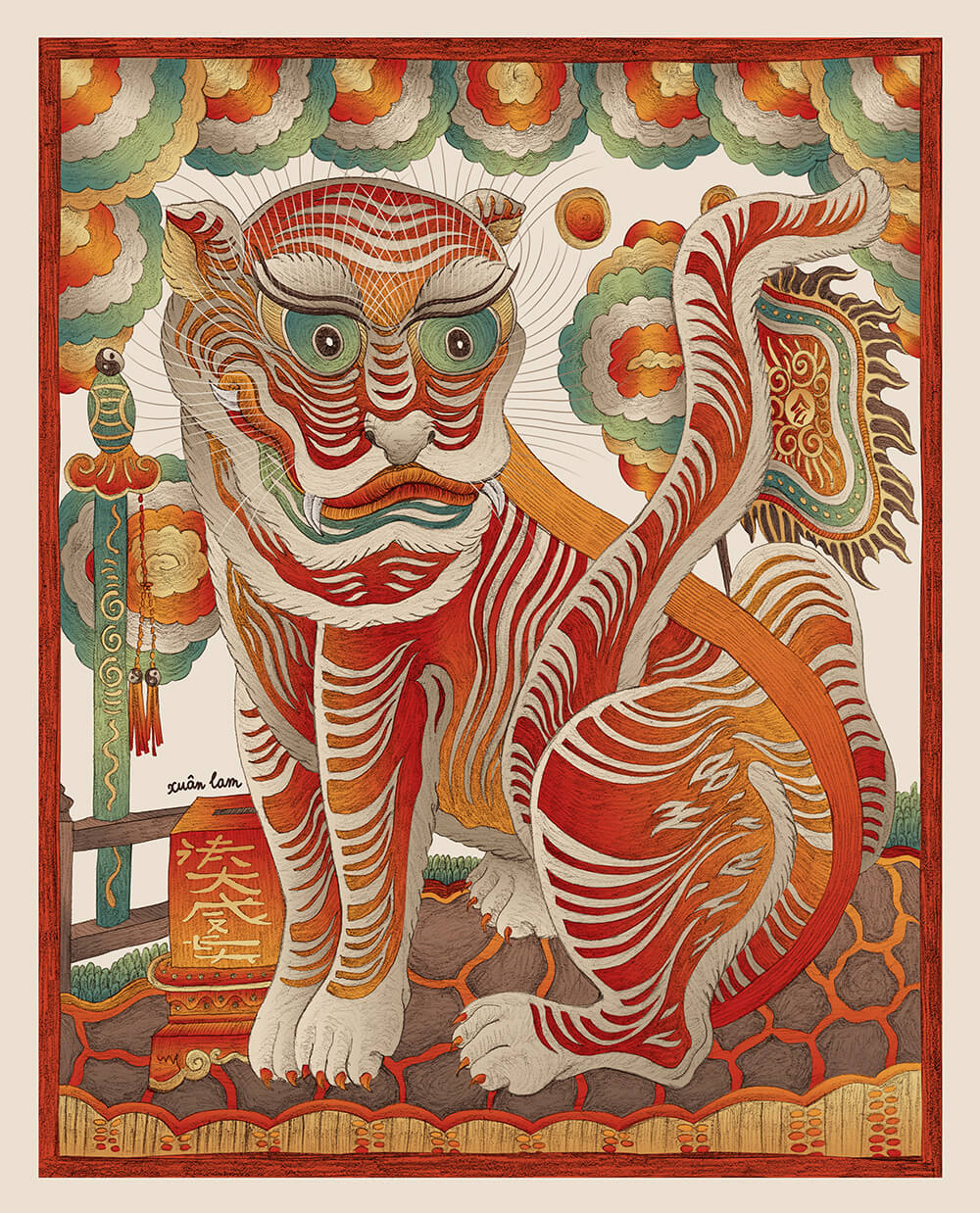
Xích Hổ Thần Tướng
Mighty Red Tiger
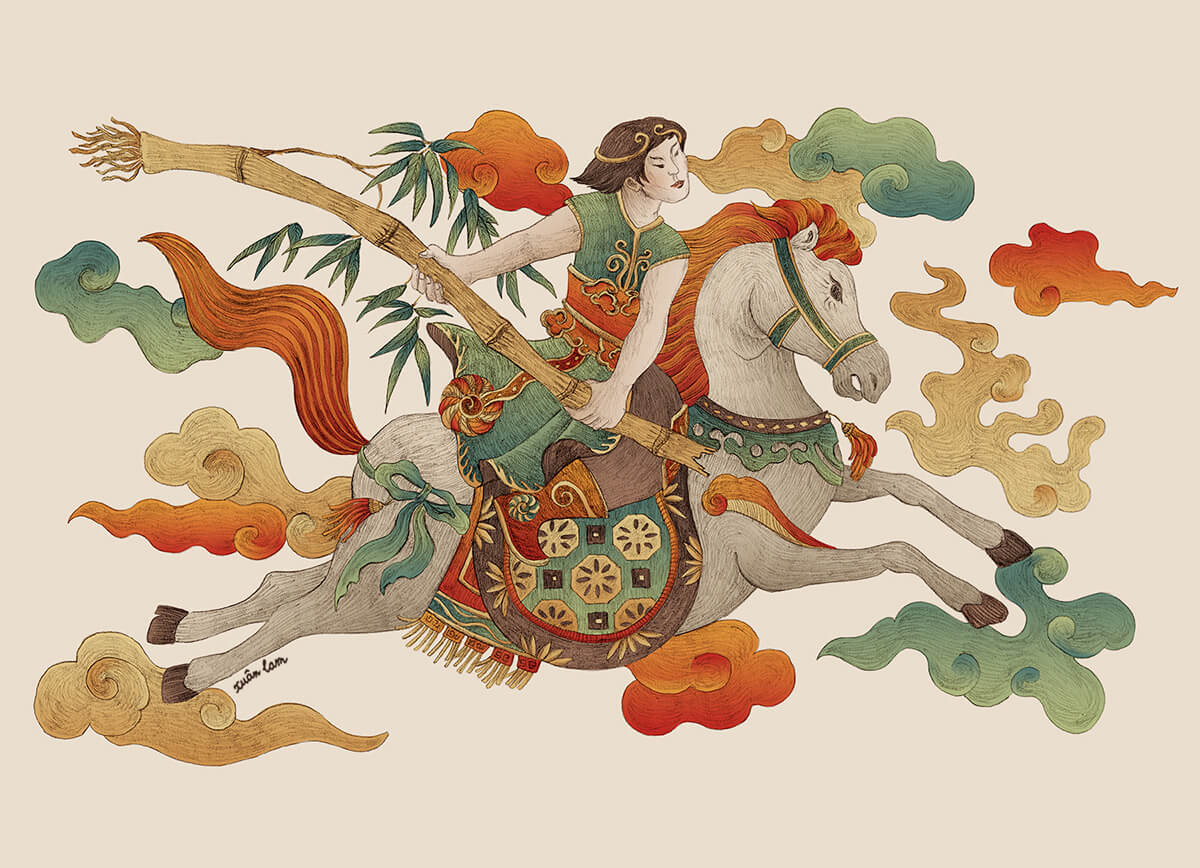
Thánh Gióng
Saint Gióng
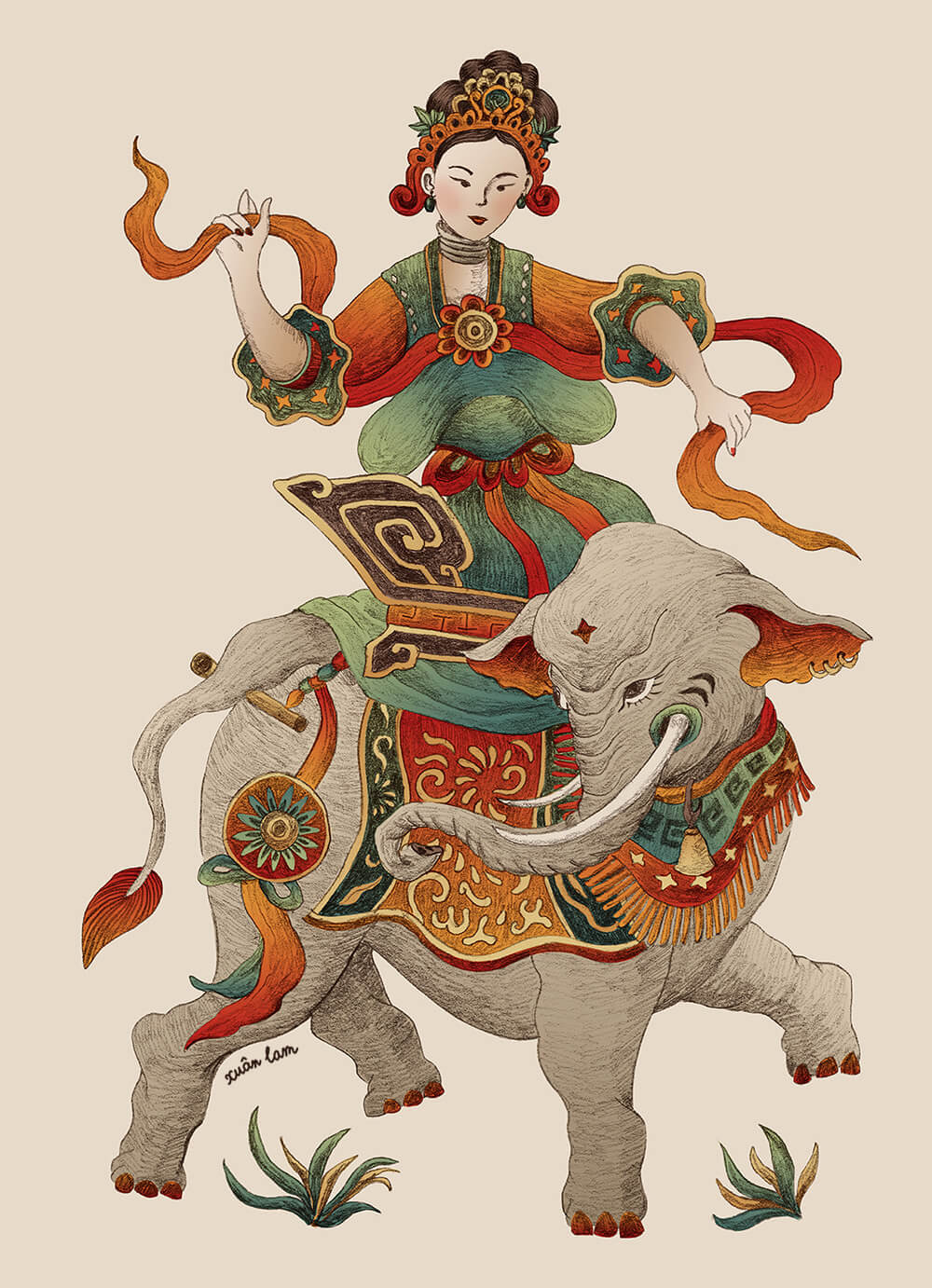
Bà Triệu
Lady Triệu
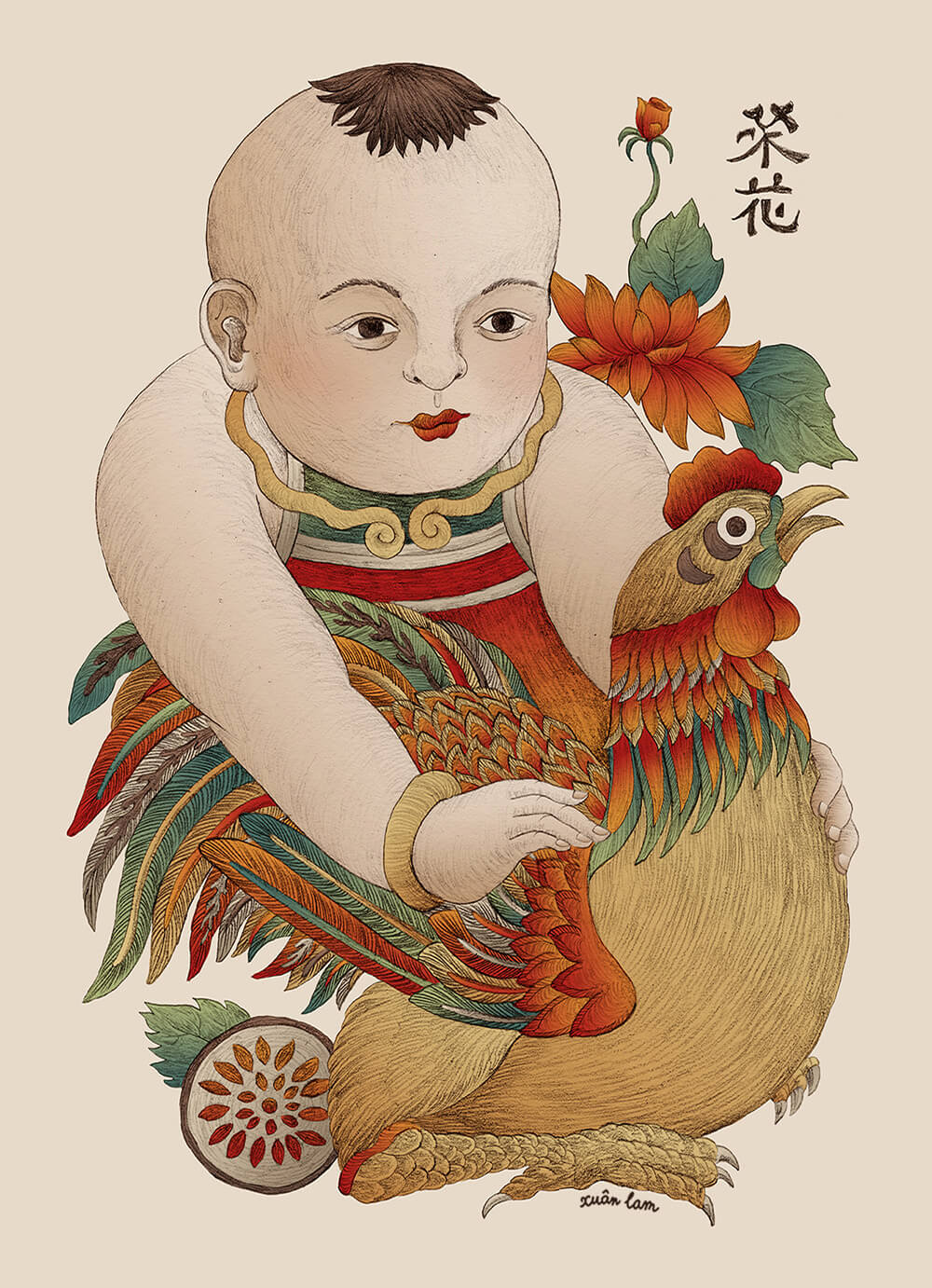
Vinh Hoa
Eminence
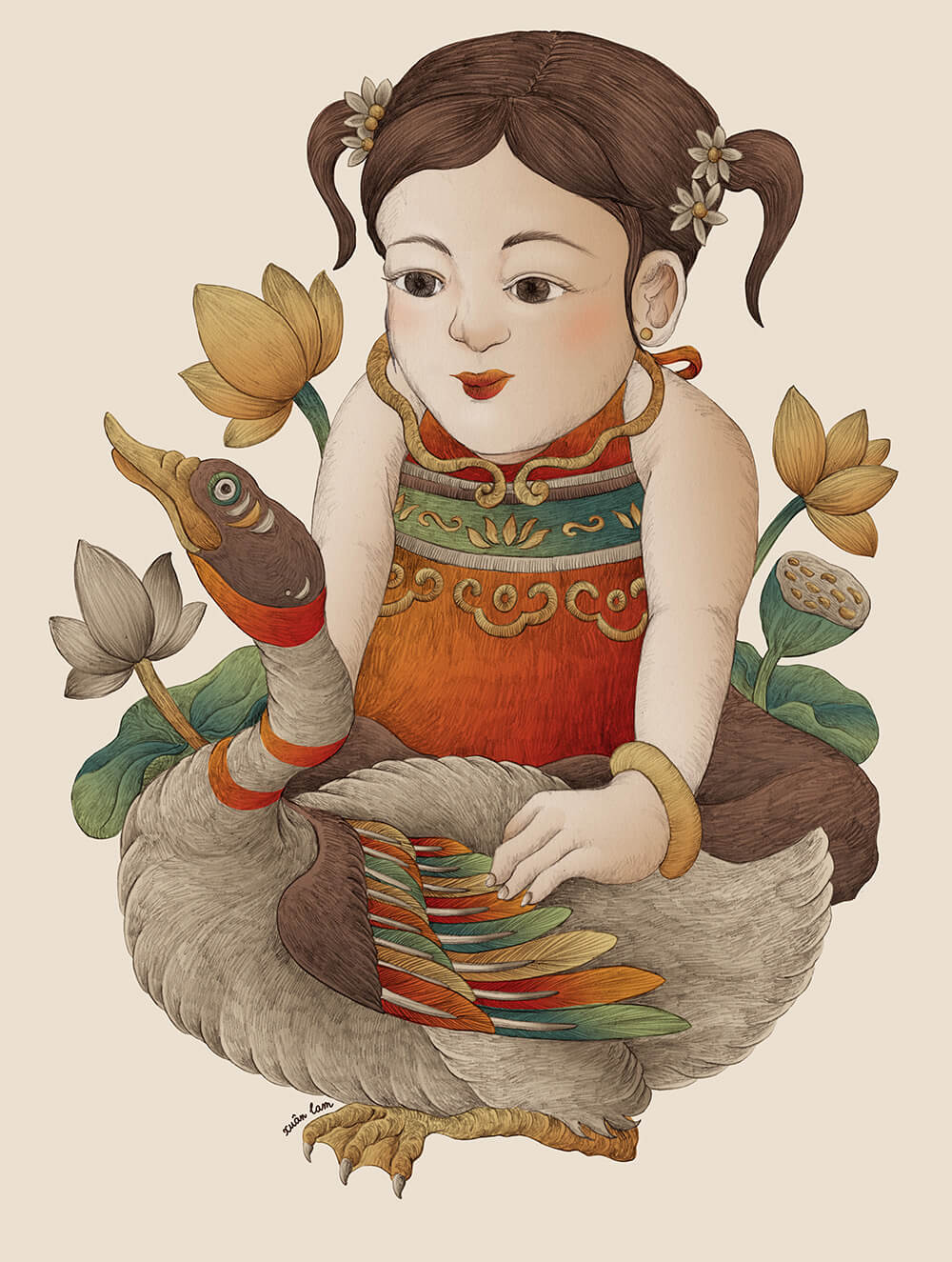
Phú Quý
Prosperity & Honour

Thiên Hạ Thái Bình
Peaceful World
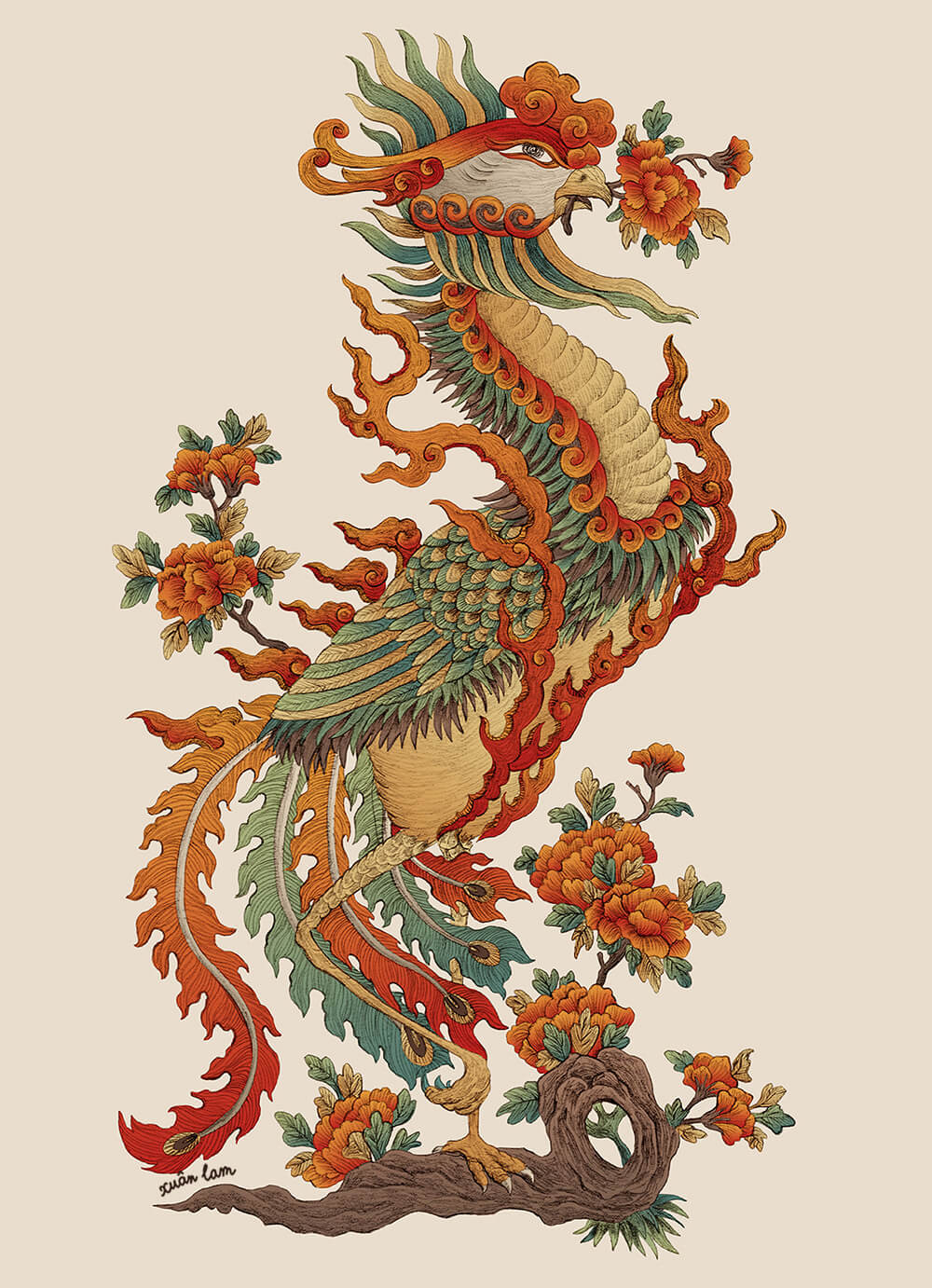
Hạc
Crane
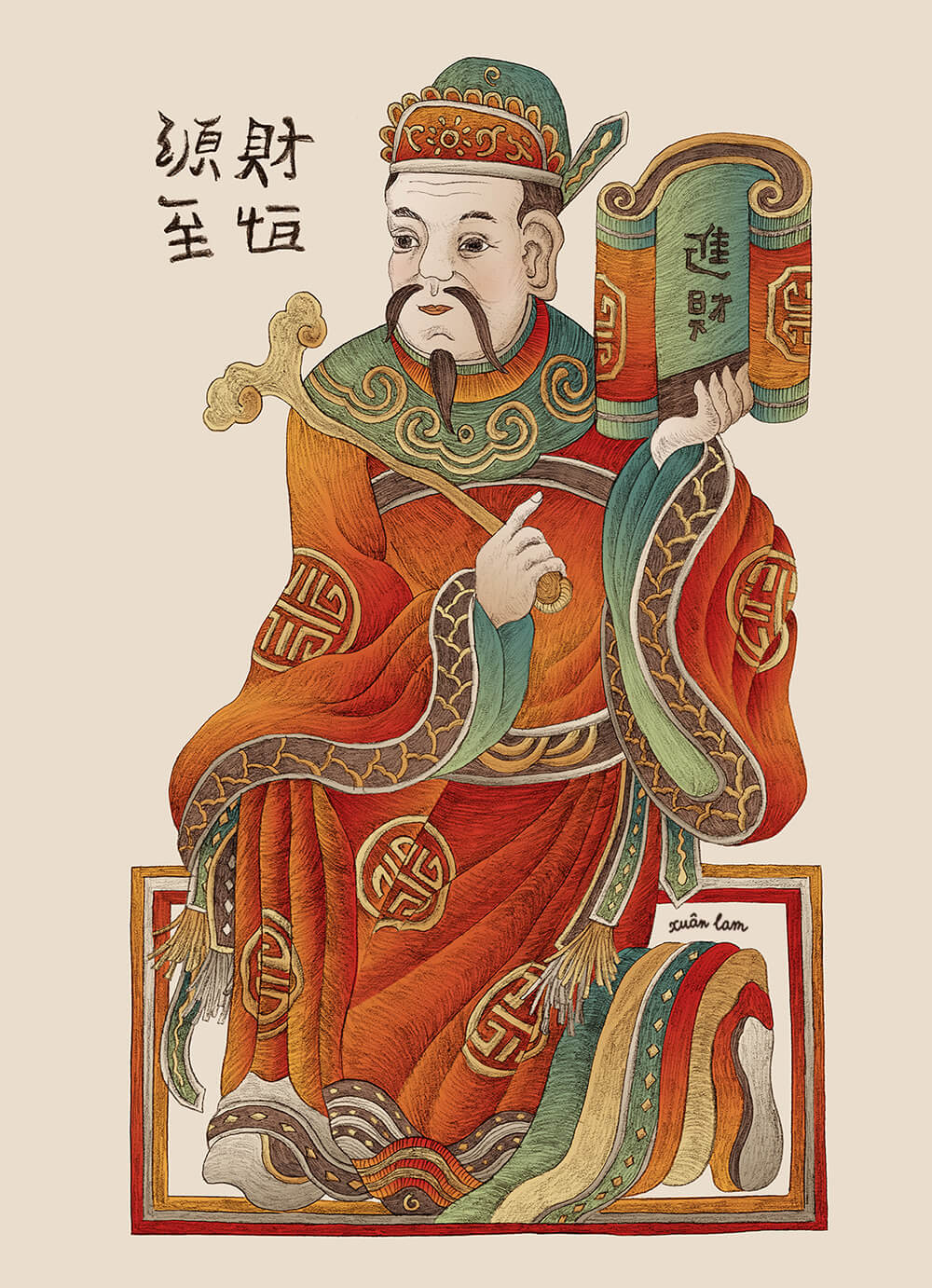
Tiền Tài
God of Wealth
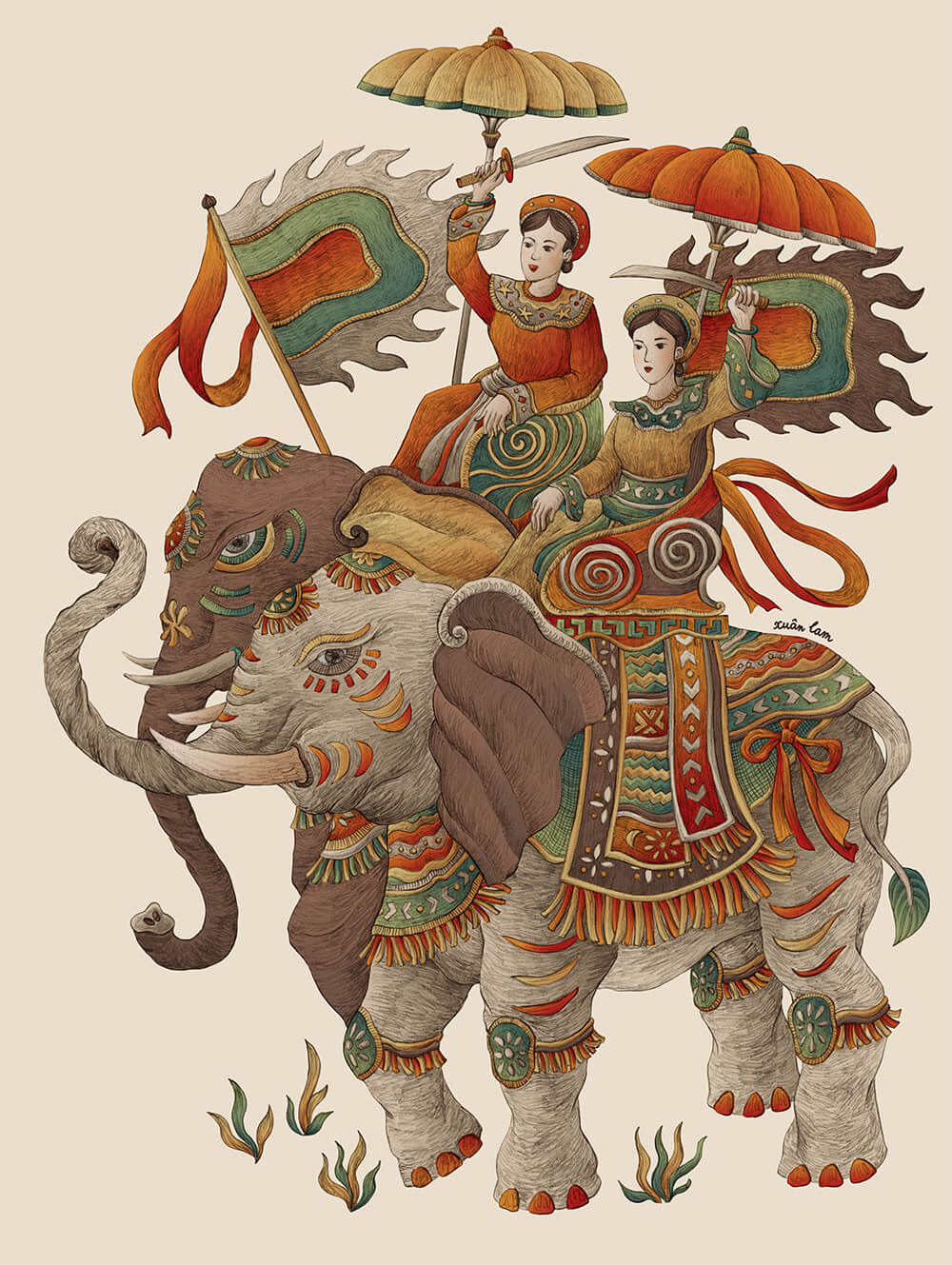
Hai Bà Trưng
The Trưng Sisters
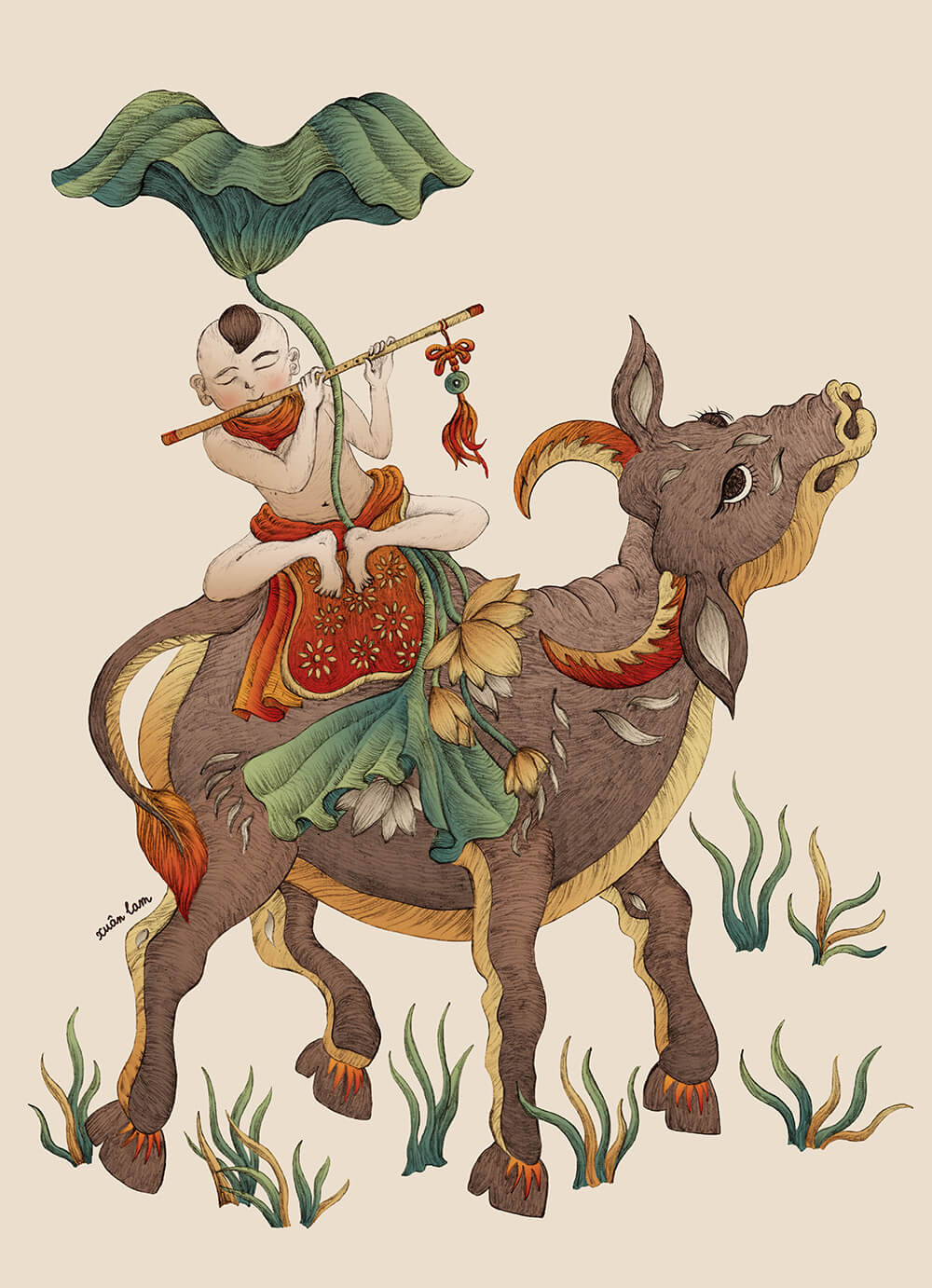
Chăn Trâu Thổi Sáo
Little Buffalo Boy Playing Flute
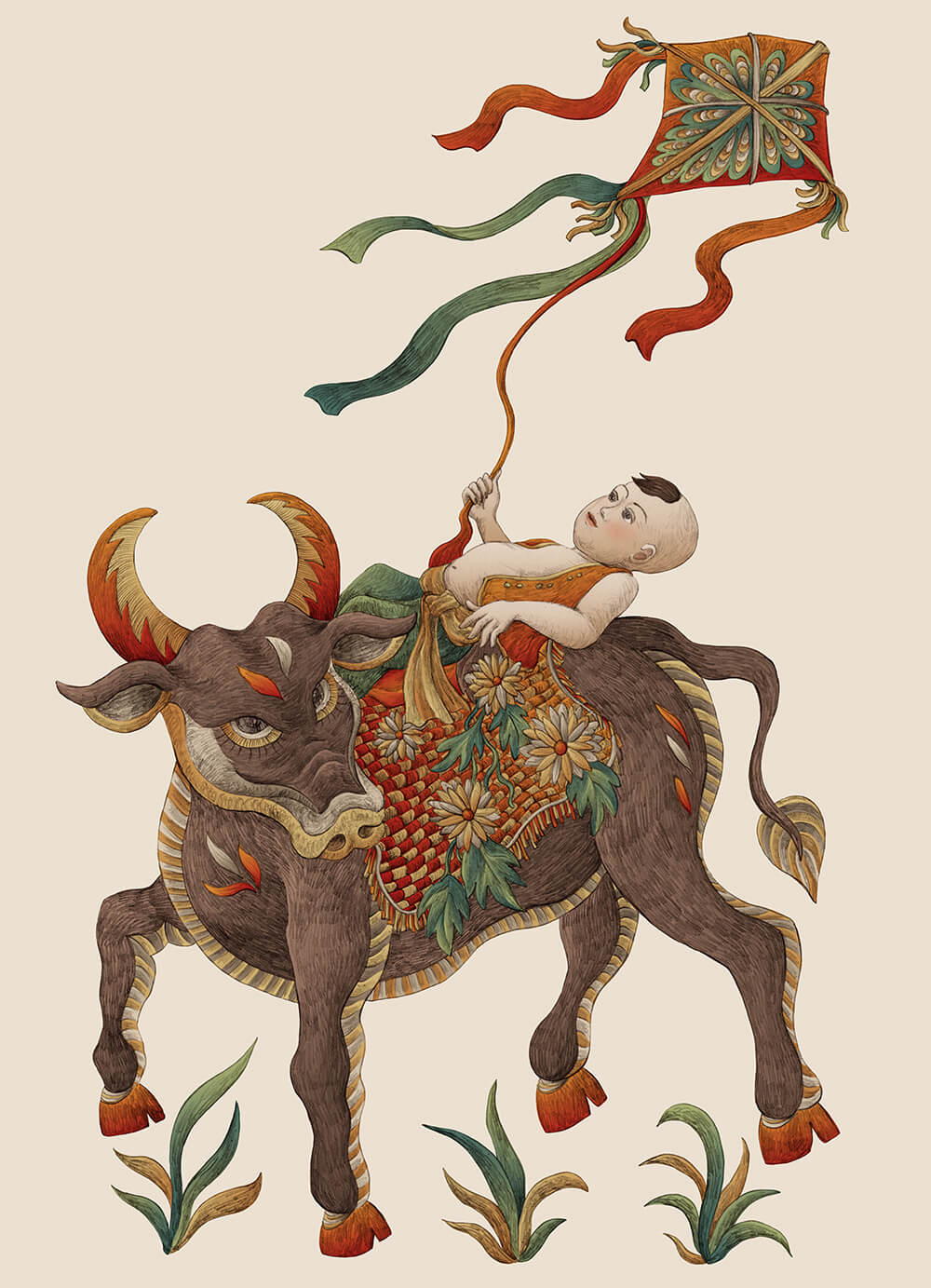
Chăn Trâu Thả Diều
Little Buffalo Boy Flying a Kite
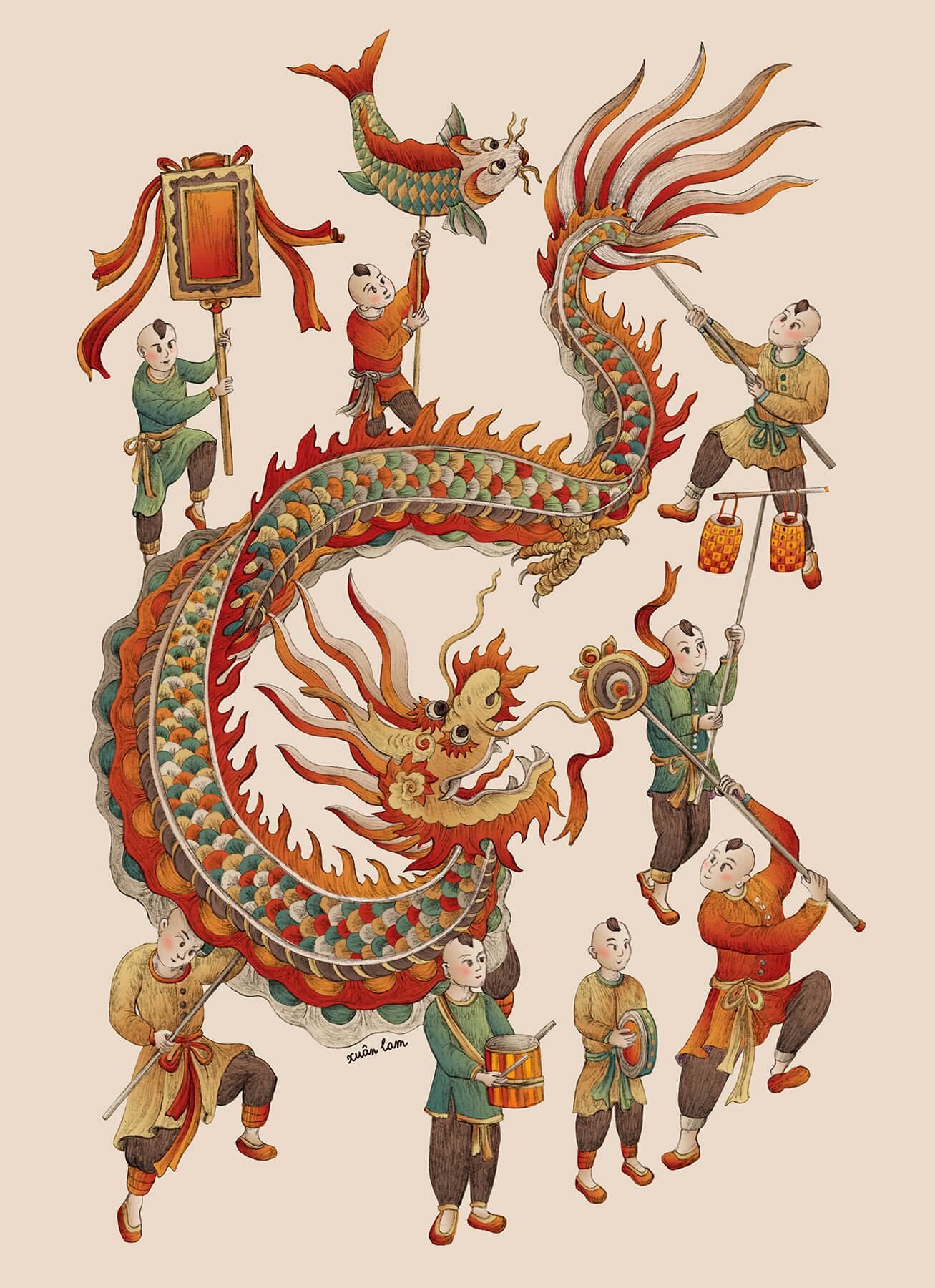
Múa Rồng
Dragon Dance
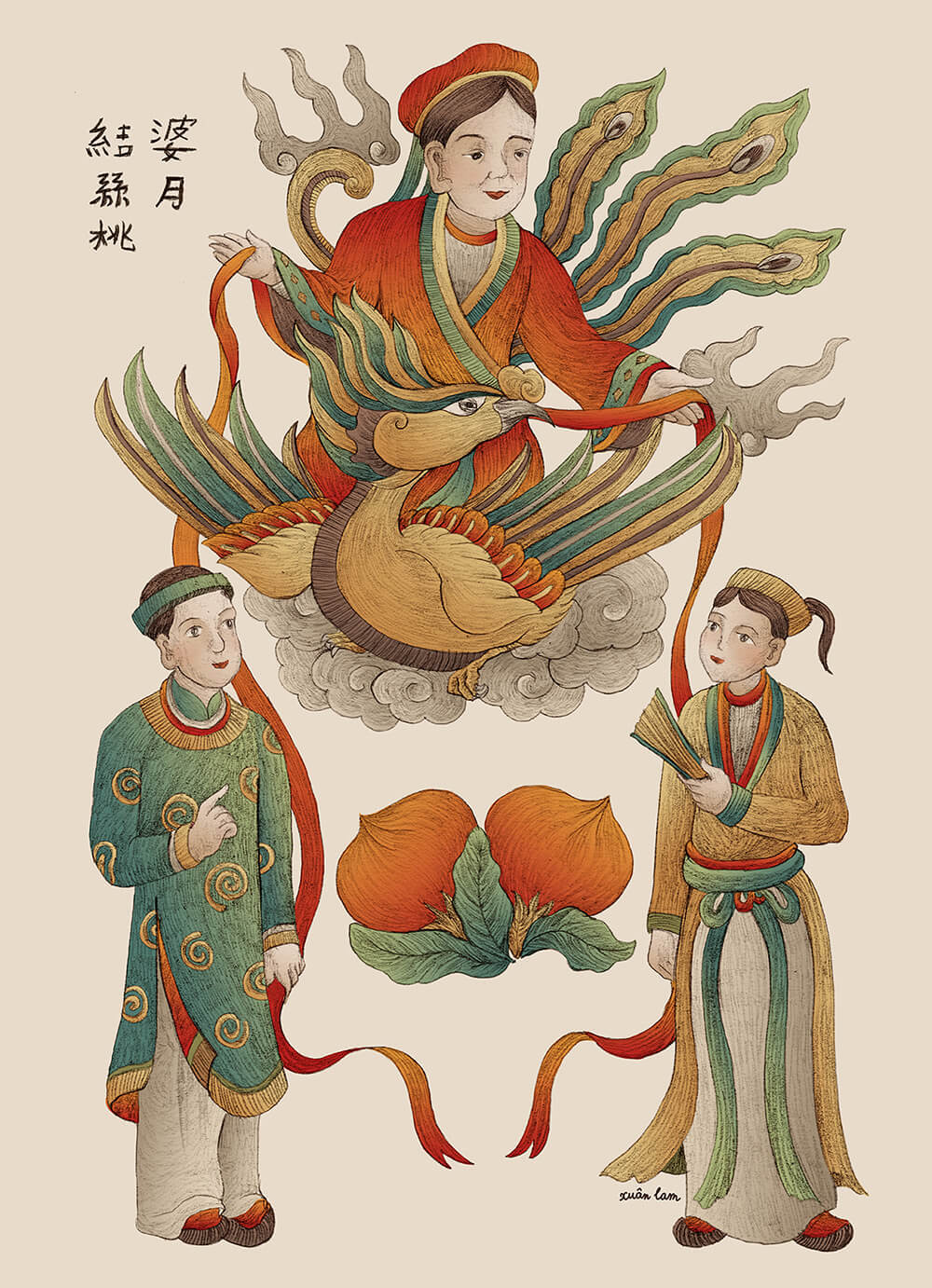
Bà Nguyệt
Yue Lao
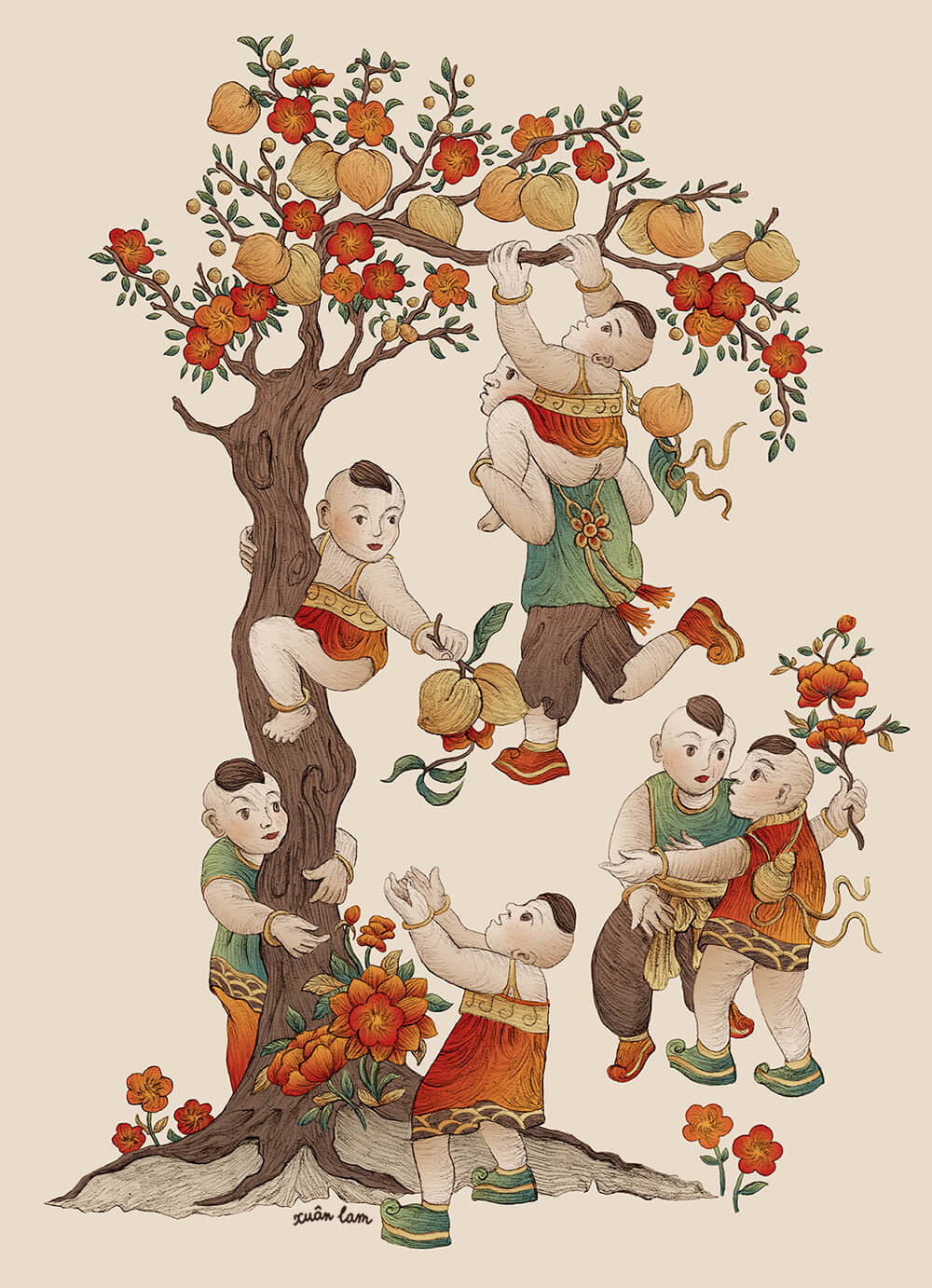
Thất Đồng
Seven Kids
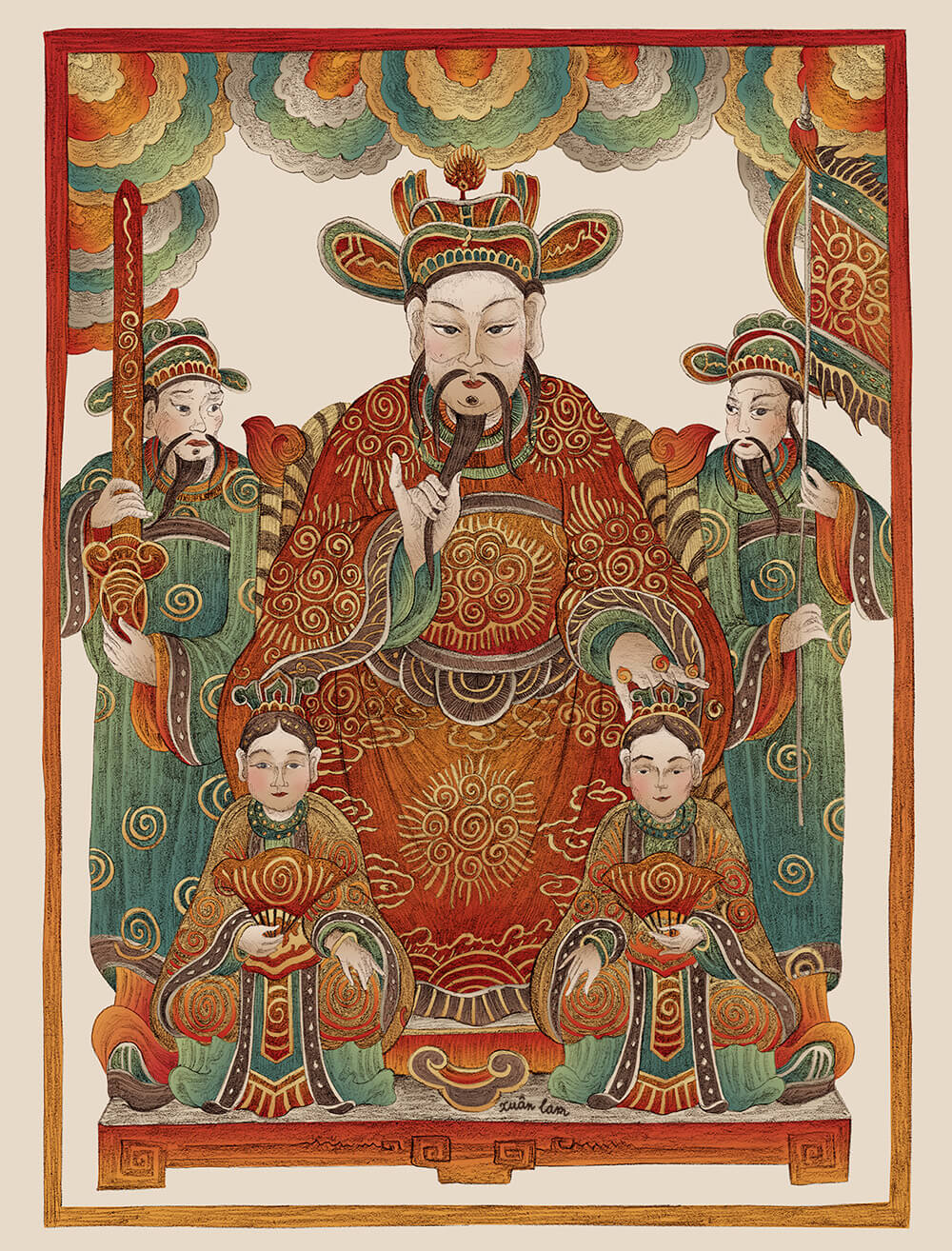
Đức Thánh Trần
Saint Trần Hưng Đạo
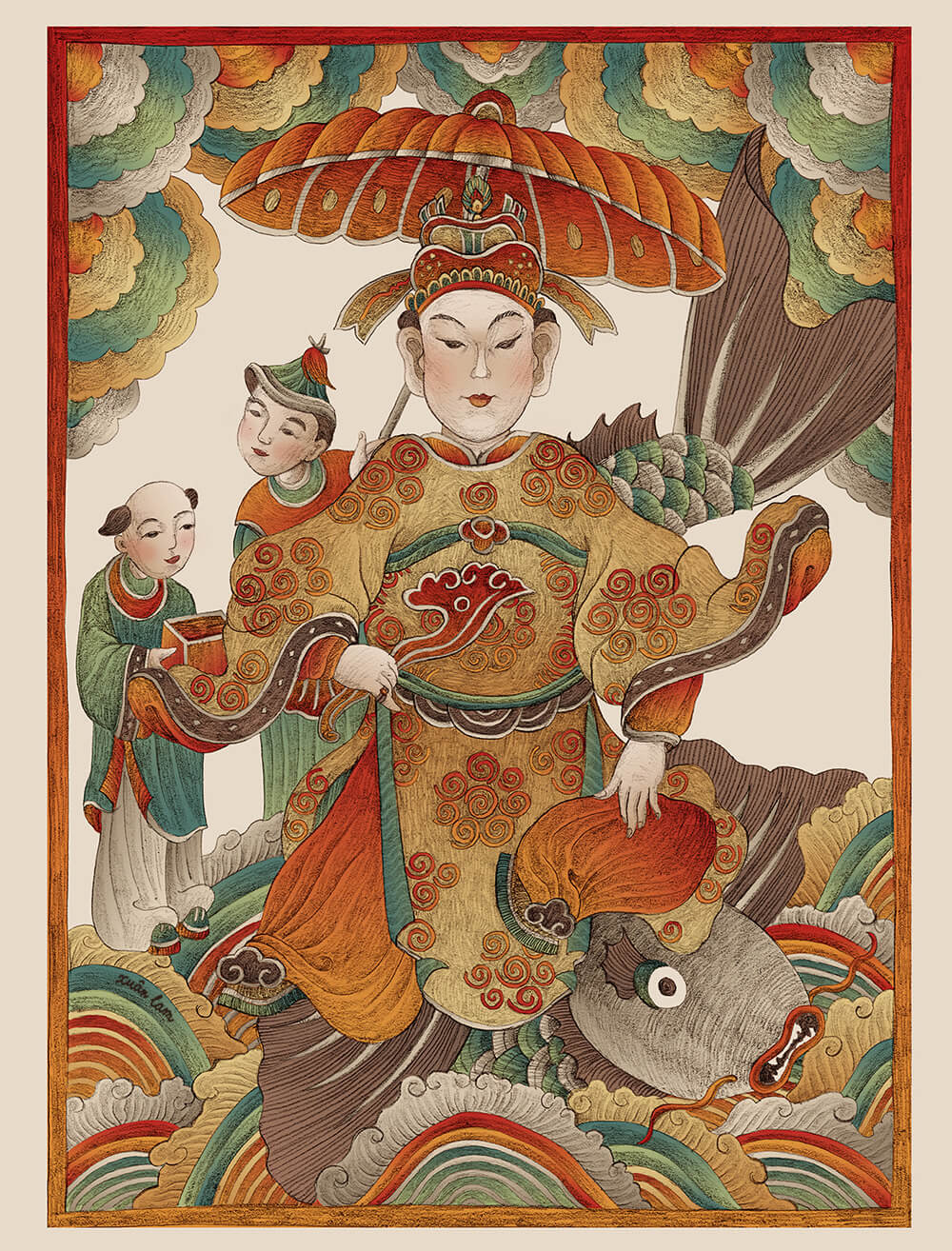
Ông Hoàng Cưỡi Cá
The Third Prince Riding the Fish
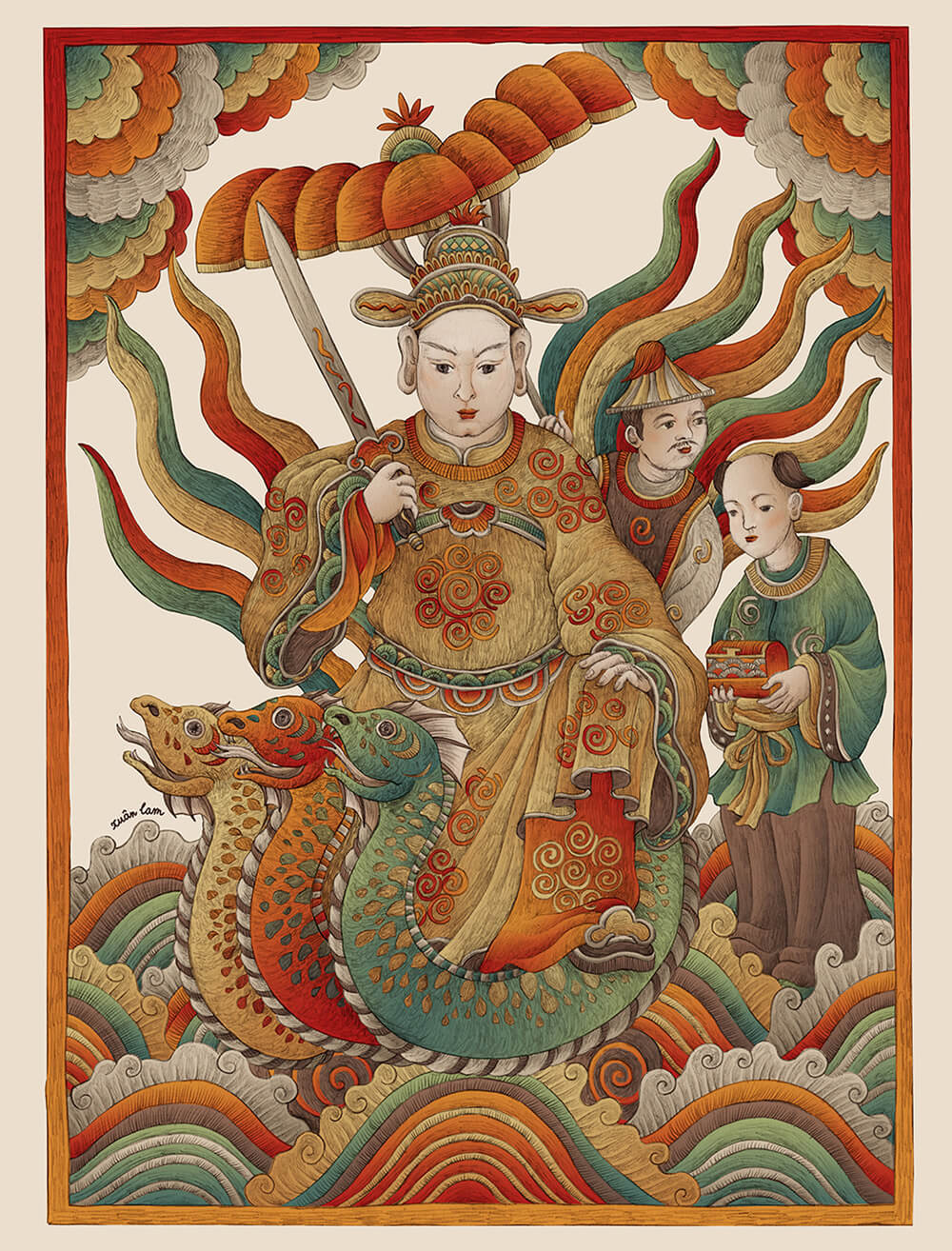
Ông Hoàng Cưỡi Rắn
The First Prince Riding the Snake
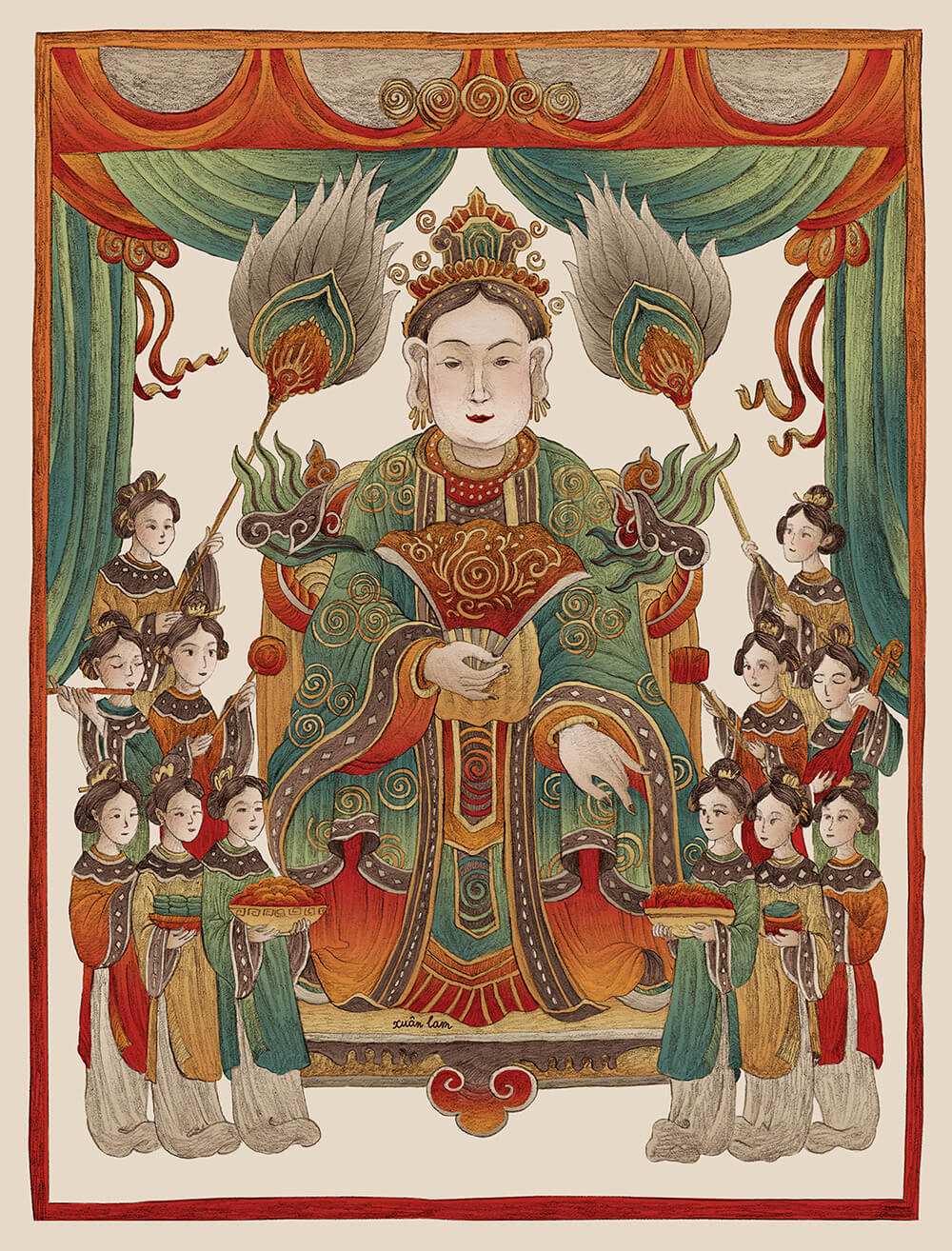
Bà Chúa Thượng Ngàn
Princess of the Forest
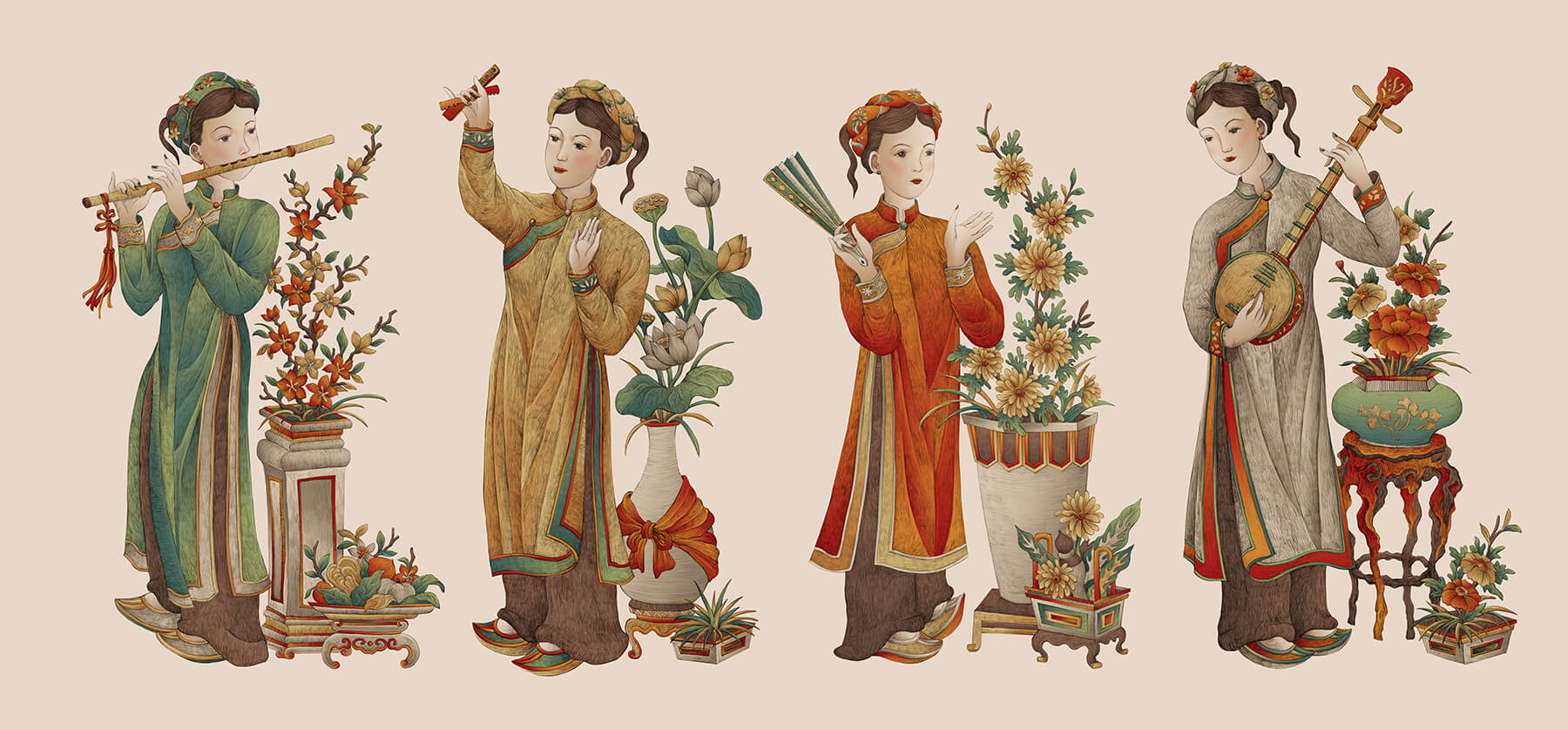
Tố Nữ
The Four Musicians
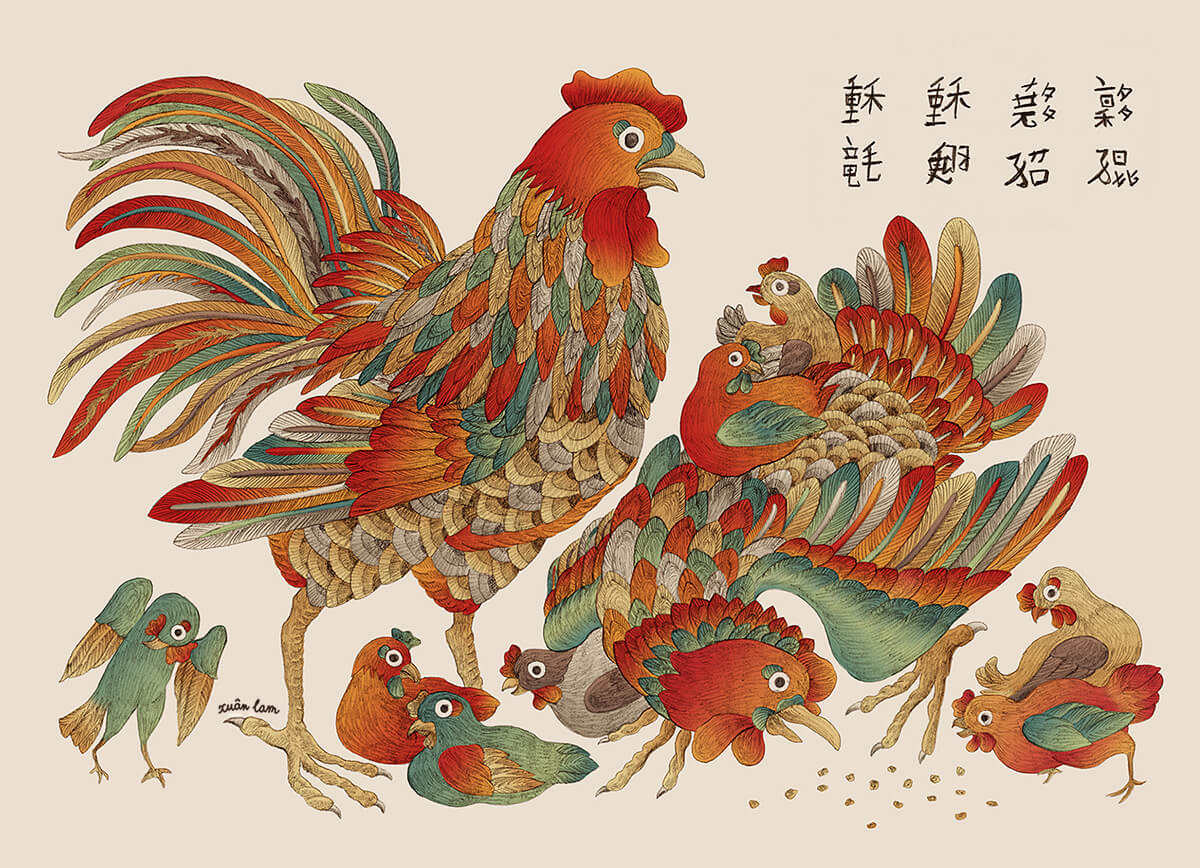
Gà Thư Hùng
Vicious Gamecocks
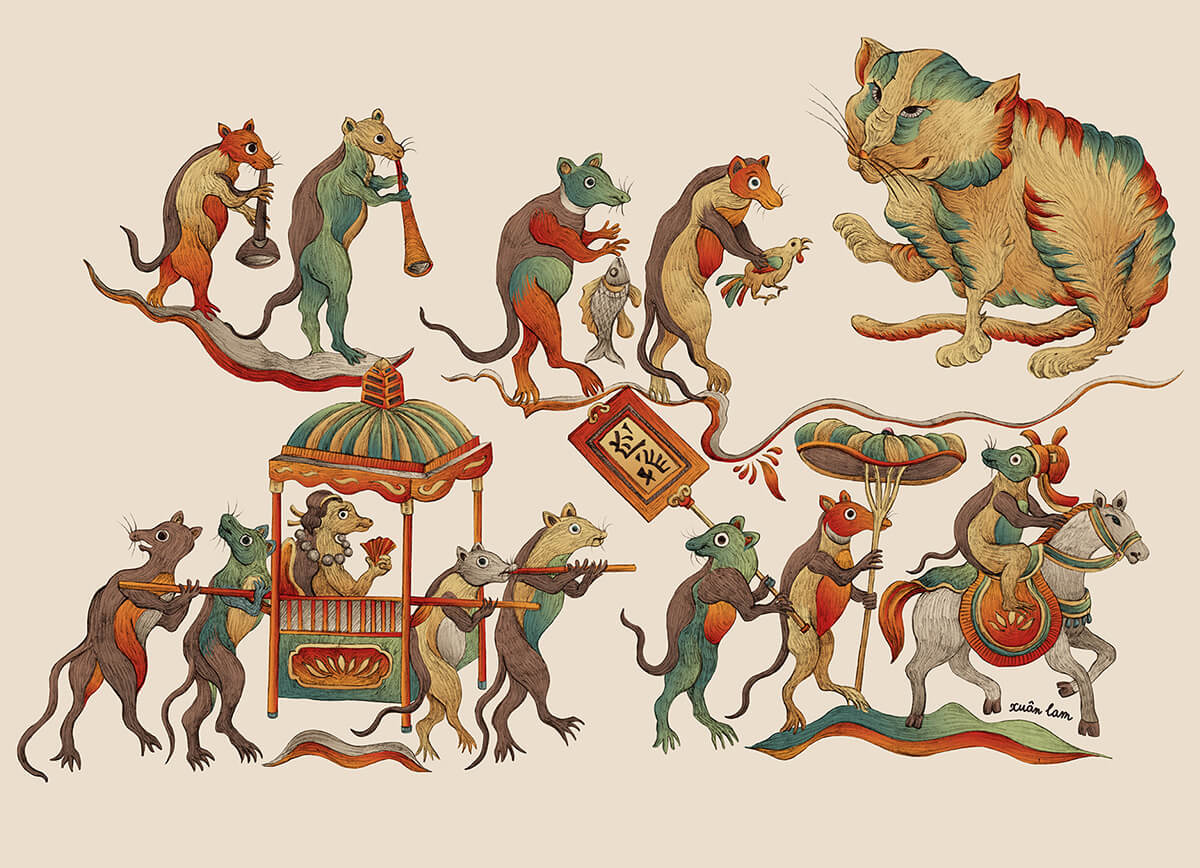
Đám Cưới Chuột
The Rat's Wedding
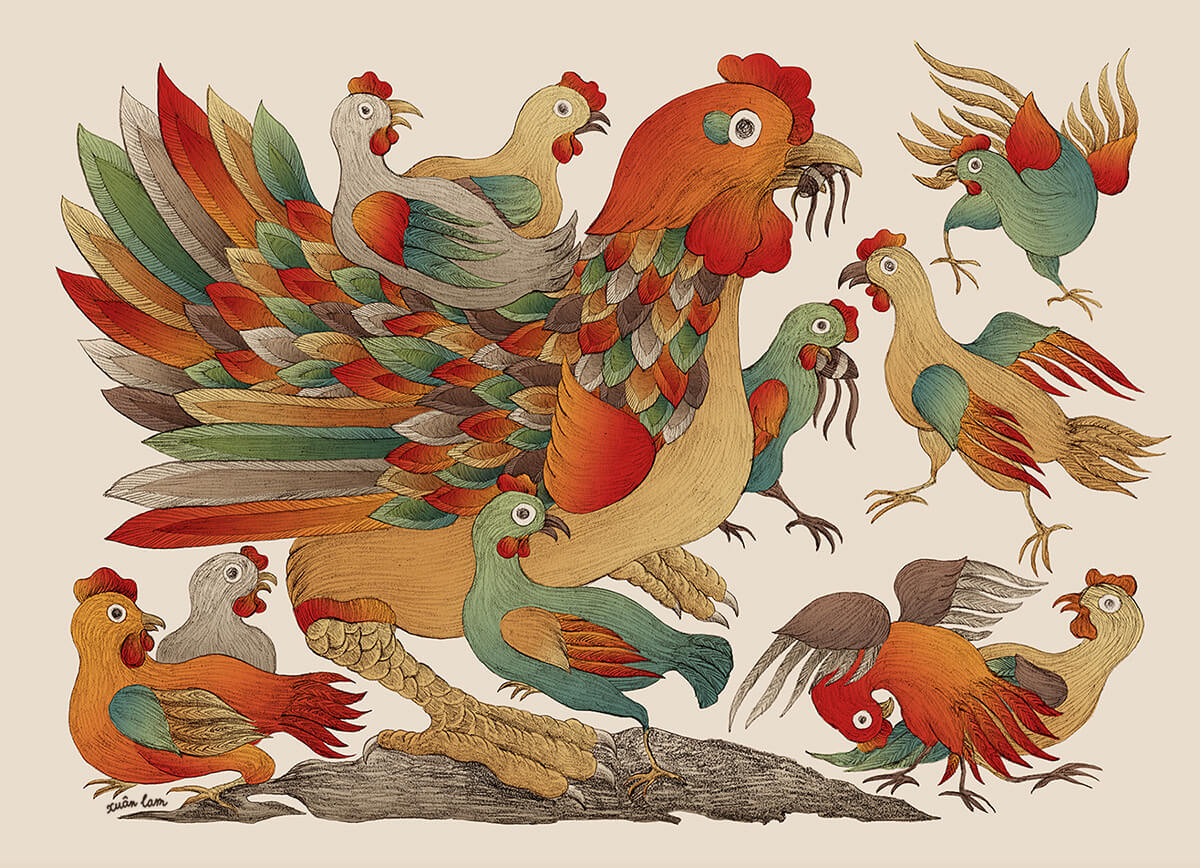
Gà Đàn
The Clutch of Chickens
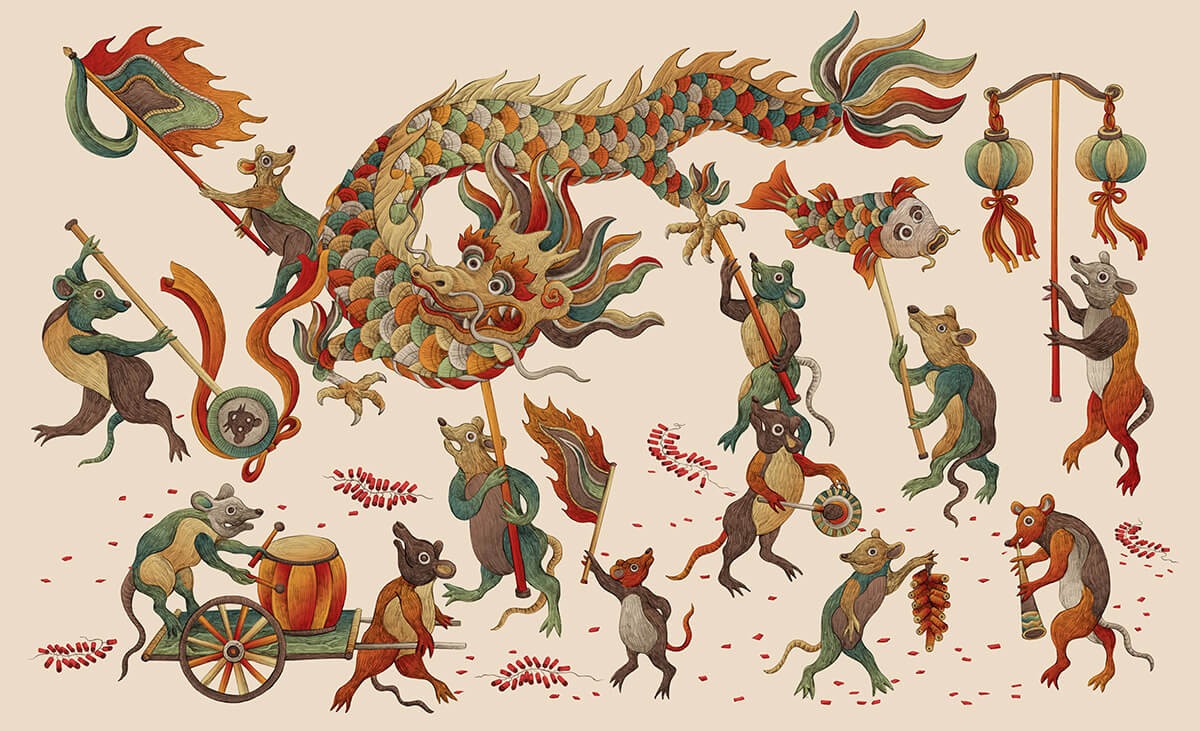
Chuột Rước Rồng
Rats Performing Dragon Dance
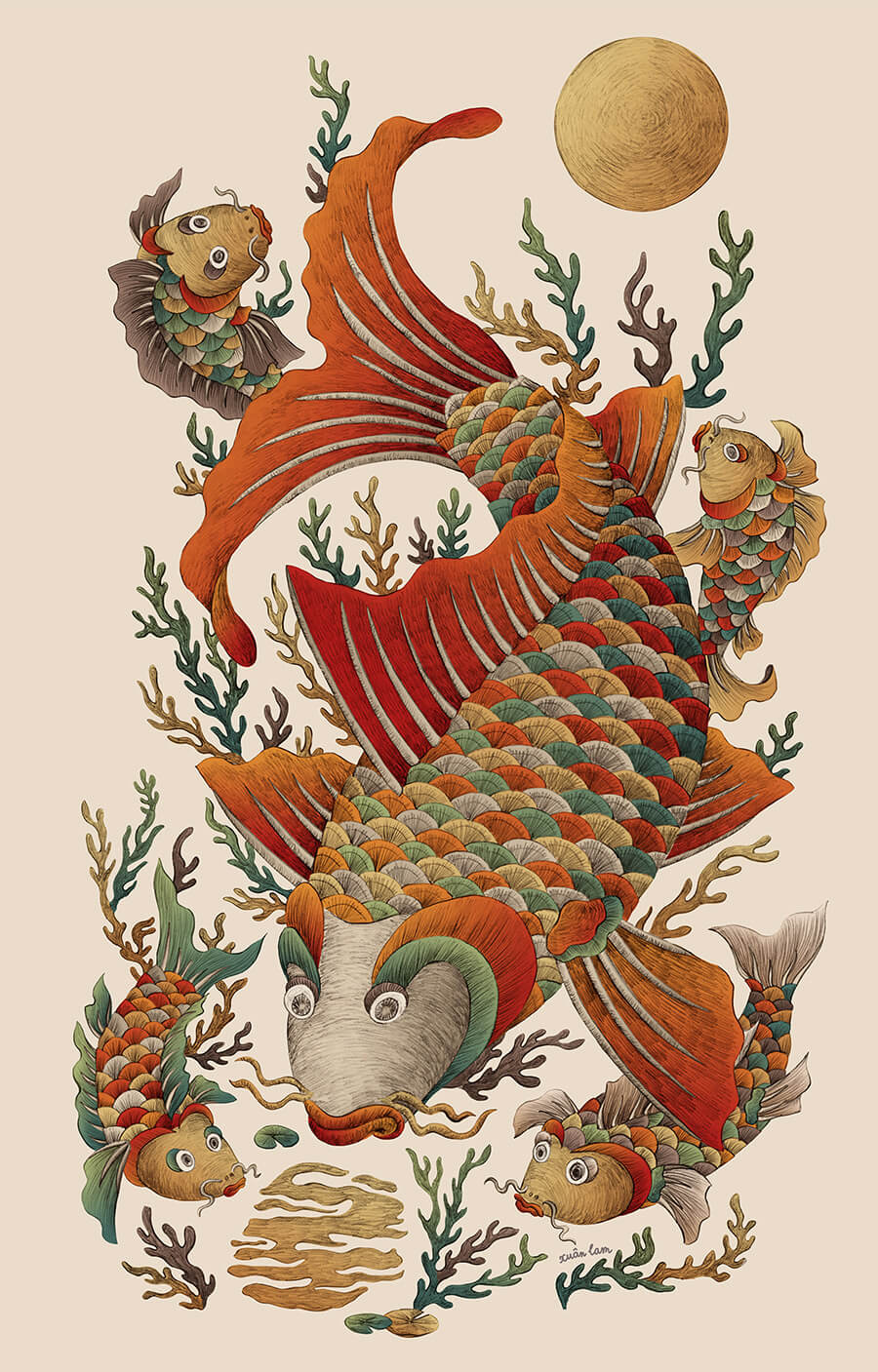
Lý Ngư Vọng Nguyệt
The Carps Looking for the Moon
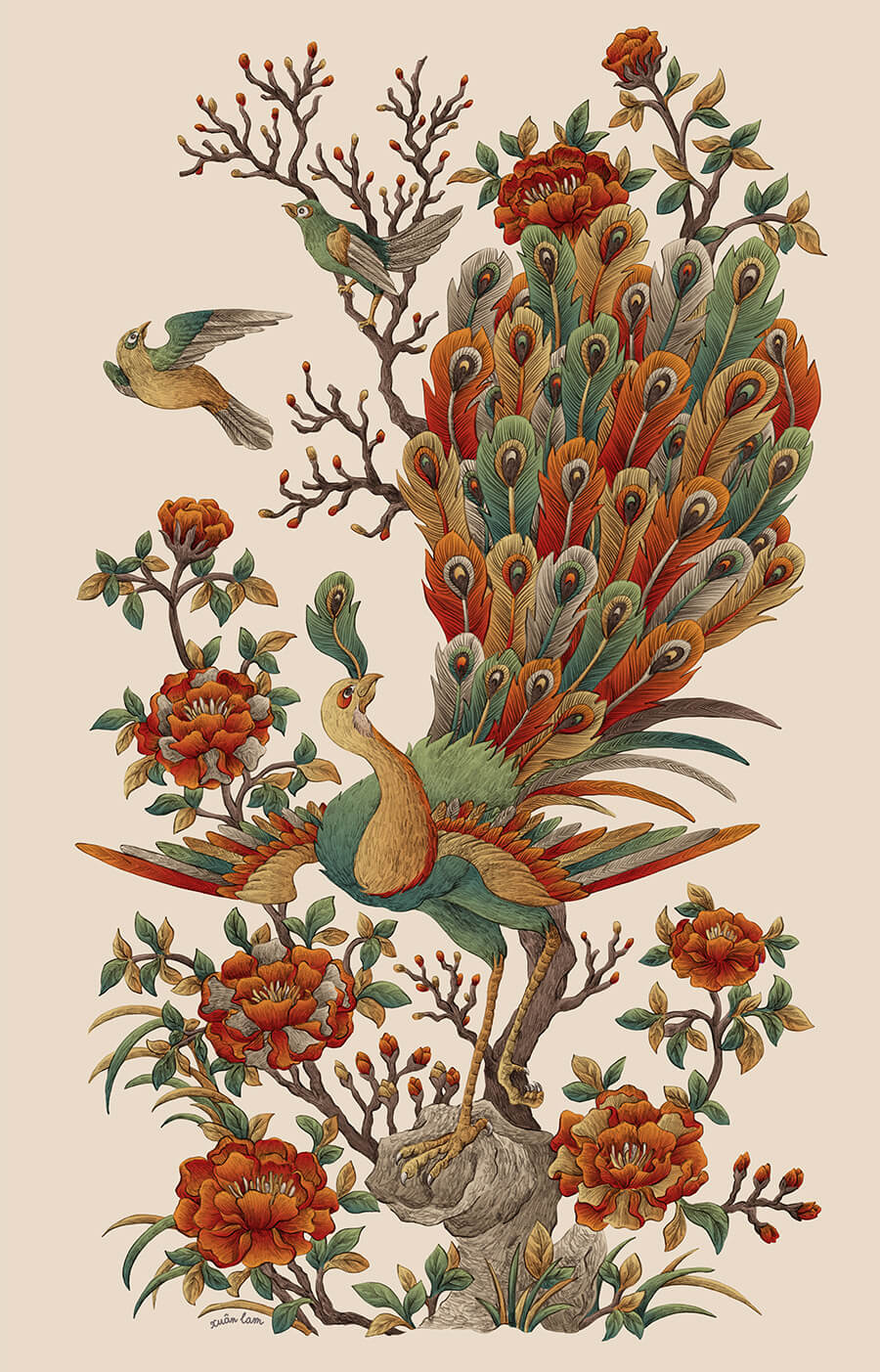
Chim Công
Peacock
Designed by Xuân Lam © 2025


Designed by Xuân Lam © 2025



